Once Test cricket was the mainstream product, the crowd at the turnstiles, the gentlemanly players, and stars was a spectacle. Rollicking batsmen, devastating fast bowlers, wily spinners, umpires wearing long white coats, the mannerism, rules, the elite properly dressed, a gentle clap, standing ovation or at best one or two soft words ‘played’ or ‘well bowled’ was cricket’s purest expression.
However, in a much subtle way there were attempts to add financial attraction. 1912’s triangular series experiment involving England, South Africa and Australia playing in England sunk as did the Titanic that year.
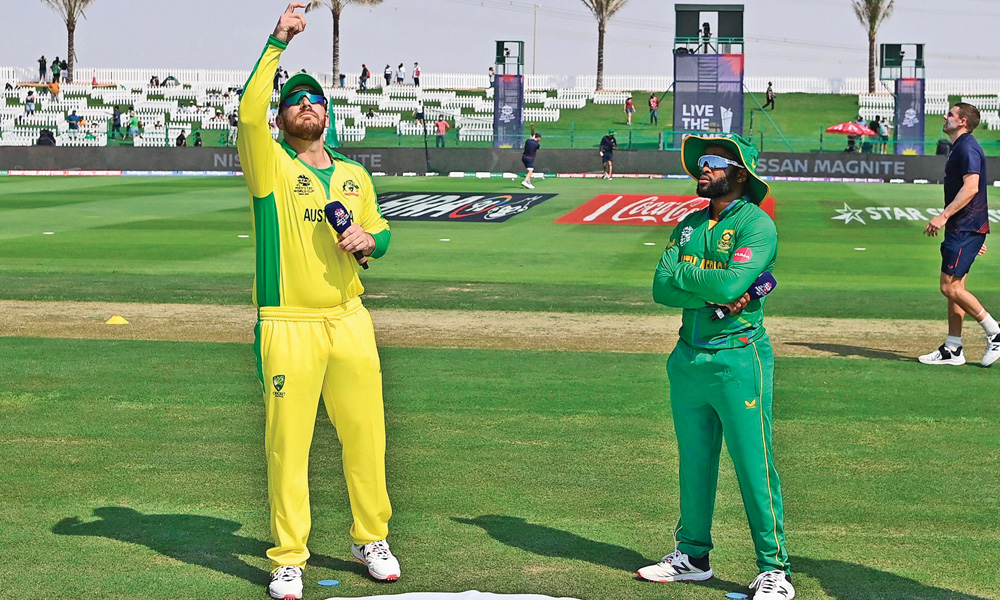
Cricket saw its evolution through the ages interspersed with unwanted events such as the bodyline, drag, mediocre white captain leading the star studded coloured West Indies team, England taking almost twenty years to take on New Zealand after they had been included as ICC’s Full Member, racism, back-ended cricket politics, India, Pakistan and West Indies not playing against South Africa, Amateurs versus Professionals conflicts, drag, chucking, biased umpiring, pitch and ball tampering, spot and match fixing to see it progressing to having organized men’s and women world cups.
Sponsors such as Prudential Insurance in England, Wills in Pakistan, and Shell in the West Indies etc. joined in, four-day cricket reduced to Limited Overs Internationals and eventually to see T20 Internationals amidst burgeoning private leagues across the world. Cricket’s real essence and philosophy seems lost somewhere.
Optimists consider it as part of the globalized trends, monetization, and different business models where cricket has become an industry. To the connoisseurs it is all about vulgar commercialism where Test cricket is not only losing its audience but dying on its feet. Some also contemplate that time has come where the private leagues as we see in world football will soon supersede international cricket.
Should we believe that cricket has been held hostage by the broadcasters and the business entrepreneurs and here I am not referring to the over-powering black economy and strangely, as we see field restrictions in white ball cricket, the strategic time-outs even T20 International cricket itself provides a handful of opportunities for the betting houses and betters. If we dig deep, it seems ICC somewhere on one hand shows zero tolerance to corruption on the other inadvertently seemingly supporting the eruption of such events or providing the space.
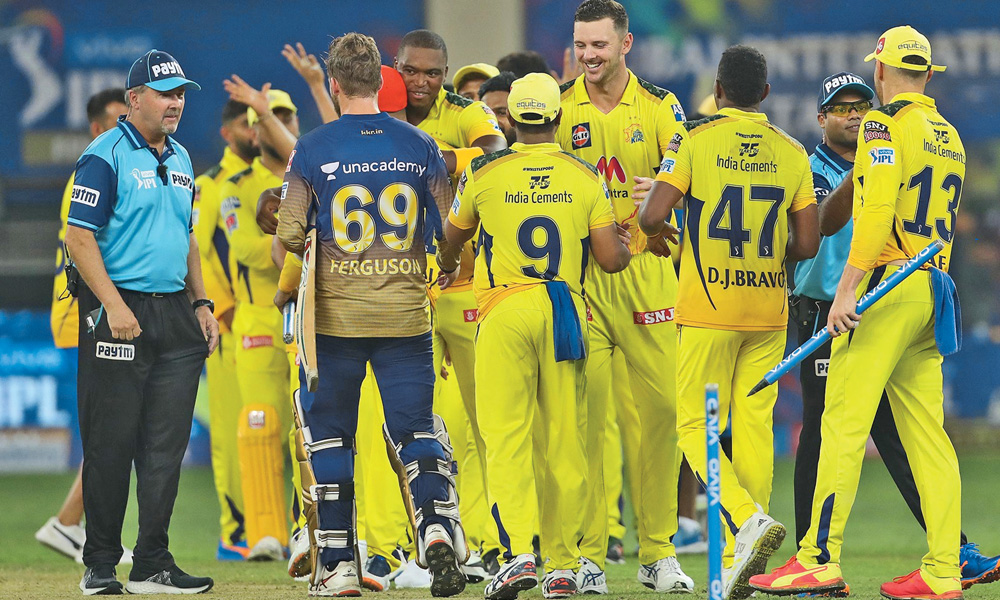
Franchise owners are business magnets and there have been undertones about the type of people picking up the teams to consolidate their collateral earning streams regardless of how they do it, for power, fame or quadrupling their business investments. Interestingly, at times the amount of commercial airtime sold according to the total broadcasting sports outlay hardly syncs in with the vulgar investments made. Why would an entrepreneur risk his money? Should we also believe in the conspiracy theories that at times to ensure increasing the content pricing, somewhere matches in the global tournaments are orchestrated or team groups are made where India and Pakistan share the space? Just a question? Cricket’s legislative body which hugely depends upon the revenue they earn from the world tournaments broadcasting rights also have on their rolls the umpires, hawk eye, DRS, even the curators or spin of the coin (an ex-Pakistan captain shared a coin which had crown on both sides, may a manufacturing fault).
Effectively the organizers control the matches indirectly. Here we aren’t casting any doubts just deliberating on circumstantial evidence and that too not to make news but to understand the business mechanics in this world of outrageous commercialism. Cricket needed to progress, financially it has however the quality of the game has gone down. Maybe, to some it hasn’t regressed qualitatively, rather it has transformed out of all recognition and that’s what the attendees and viewers want to see. What you see sells out there in the market. This needs to be dug deeper still. This needs to be redressed.
We all know ICC’s main reason to introduce field restrictions was to make the game batsmen friendly since cricket passionate not the cricket literate come to see batters smacking the ball all around the park. For the cricket literate technique, method, baptism, self-belief, attitude, mental strength, and skills are what make a great cricketer. To the cricket frenzied or passionate, a batsman hitting a couple of sixes during crunch moments becomes a star overnight. Cricket is diverse but it could be indiscriminate and ruthless is a latest revelation.
Now let’s do some random mathematics. We must understand that the BCCI is the richest board and India remains the largest market in world cricket. ICC earns through global tournaments, branding, merchandize and other collaterals.
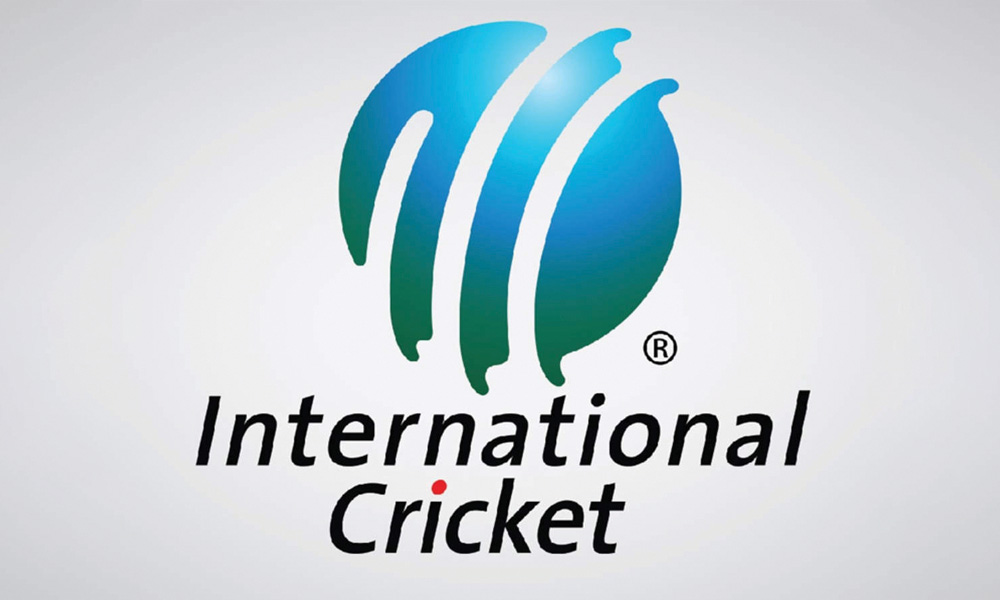
Currently, ICC infuses USD 273 million to BCCI (India), USD 143 million to England, USD 132 million each to Australia, Pakistan, New Zealand, South Africa, Bangladesh, West Indies, and Sri Lanka and USD 94 million each to Zimbabwe, Ireland, and Afghanistan over a period of eight years and up to USD 300 million is distributed amongst the Affiliate and Associate Members to help their theme of cricket’s globalization, infrastructural development and executing players’ programmes etc.
This means ICC over a period of eight years spends USD 2.578 billion. Interestingly the ICC global broadcasting rights 2015-2023 went for USD 2.2 billion, the BCCI global rights (2018-2023) were acquired for USD 1.1 billion whereas the IPL broadcasting rights (2018-2023) went for USD 2.6 billion. Now the canvas is changing. ICC shall be releasing their RFP for the next eight years broadcasting rights including a thick crop of world tournaments, almost one every year and they must be expecting to increase the value up to USD 3.0 billion to 3.5 billion. Leaving aside BCCI rights (2023-2028) which may have their value increased depending upon the FTP and India’s commitment up to USD 2.0 to USD 2.5 billion.
Interesting amidst cricket’s polarization, big four versus rest of the world, we must consider the Indian Premier League (IPL) being provided the time bands in the FTP since it is commercially attractive and a money-spinning machine. Its estimated brand value was up to USD 6.36 billion which due to the Covid-19 impact came down to USD 6.19 billion.
With two new franchises being added its brand value will soar up to USD 7.5 billion to USD 8 billion. With the number of matches to be increased to 99 per season means IPL shall take a major chunk out of the FTP timelines. Just to give an example in India where majority networks are based on subscription model, the broadcast advertisement revenue earned from IPL 2021 edition was up to USD 640 million.
Further, one minute during the India versus Pakistan match in the ICC World T 20, 2021 went for INR 60 million. IPL somehow is being preferred and considering their financial robustness it is understandable due to cricket having become a market-oriented sport.
Nonetheless, the orthodox like us are fearful and equally skeptical about one domestic brand of India with all its overriding might swiftly taking over international cricket. Regrettably, a governing body FIFA couldn’t save football from going full time private with players getting together either for the FIFA World Cup qualifying rounds or playing in the main event every four years why should we expect a meek legislative body dependent on full member votes that the ICC is being able to stand up and re-define their priorities.
I wonder if BCCI’s hegemonic presence through their brand for now may give them a commercial boost nonetheless somewhere in time it may well haunt them. As one of the top boards, effectively the richest and to go with boasting an outstanding team stacked with individual brands may well see other countries with even deeper markets such as the United States of America stepping in and backing private leagues attracting above average cricketers from all around the world, fast-tracking their qualification to represent US besides becoming part of their private league.
Polarization and economic disparity amongst the other boards will not help international cricket to survive. Private leagues may make players rich or random overnight stars, rest assured there shall be no legends becoming part of the cricketing folklore.
Just last few words how we saw Pakistan reeling at number eight and likely to be in another group were brought into the one where they could play India during the ICC Champions Trophy 2017. It’s another story that Asia is the largest continent providing maximum eyeballs and a robust market broadcasting outlay three Asian teams qualified for the semi-finals Pakistan, India, and Bangladesh, what an exciting coincidence.

India lost to Pakistan in the final and we had two top teams from one continent with Sri Lanka also the Champions Trophy, ICC World T20 and ICC World Cup winners lying low in the continent. Afghanistan’s mind-boggling rise as a wondrous T20 team gives broadcasters hope and more attraction towards Asia. Bangladesh for now going through a lean patch due to back-ended politics and trust breaches between the players and the BCB.
I wonder if Afghanistan could beat New Zealand and India qualifying for the semi-finals of the ICC World T20, 2021 shall at least make a few eyes to wink. It will be another pleasant coincidence.
The modern style of instant cricket such as T20s and The Hundred do provide a great degree of entertainment, but it is the format of Test cricket that requires real technique, talent and temperament and offers the most complex challenges to the batsmen especially when the task is to save the game from a difficult position. It is by no means an easy task to go out on day 4 or day 5, stay at the wicket for a considerably longer time on a deteriorating wicket and save the game for the team. Some of the finest aspects of the game such as the quality of bowling, the state of the pitch, the circumstances when the runs were scored and whether conditions make huge implications that cannot be found in the scorecard. These aspects can only be described in words. Here we look at the top 10 innings played by Pakistan’s batsmen that helped their teams avoid almost certain defeat.
To have a more meaningful quantitative analysis concerning bowling quality, the top four bowlers’ ICC ranking is taken into consideration at the start of the respective Test and the average is calculated. For example, Babar scored 196 against an Australian attack comprising of Pat Cummins, Mitchell Starc, Nathan Lyon and Mitchell Swepson. ICC ranking of these four bowlers at the start of the Test was 1, 16, 20 and 100 respectively. Taking a mathematical mean of these numbers 1, 16, 20 and 100 gives the average ranking of this attack as 34, which is a good indication of the quality of bowling Babar faced during his innings of 196.
Hanif Mohammad, 337 vs West Indies, Bridgetown 1957-58
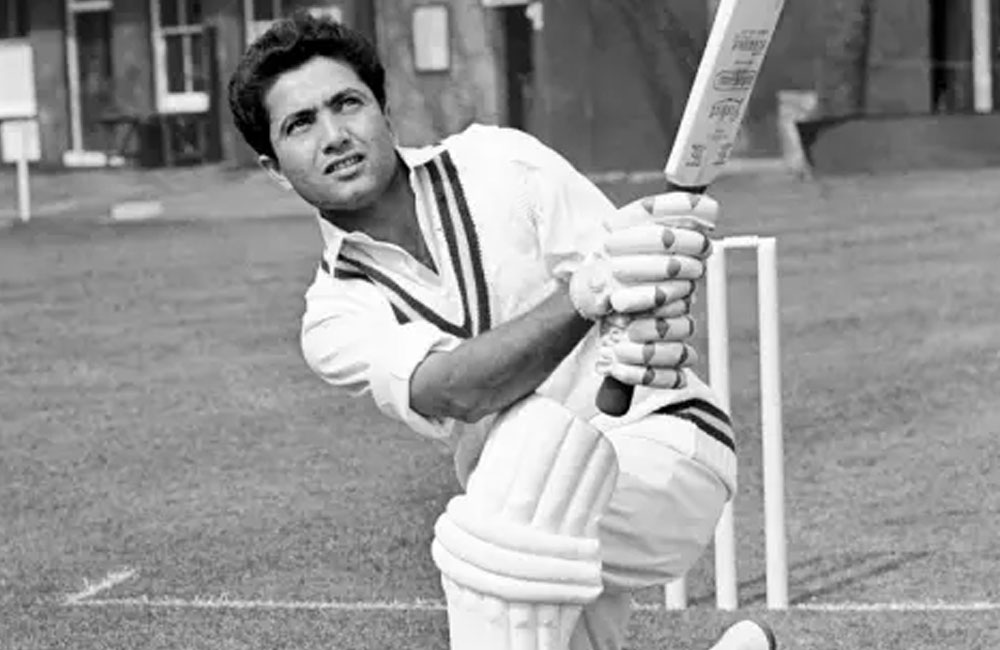
Pakistan and West Indies met for the first time in a five-match series in 1957-58. In the first Test at Bridgetown, West Indies rattled up a mammoth first innings total of 579-9 declared. In reply to this total, Pakistan was dismissed for just 106 in their first innings an hour after lunch on day 3. With a healthy first innings lead of 473, West Indies enforced the follow-on leaving Pakistan with a formidable task of saving the Test with over three days to go. Considering Pakistan’s dismal performance in the first innings, a thumping victory for West Indies was considered a foregone outcome. However, Pakistan turned the table upside down in the second innings. In a remarkable display of patience, temperament and technique, Hanif Mohammad stayed at the wicket for 970 minutes which remains the longest innings in the entire history of Test cricket. Hanif put up century partnerships for each of the first four wickets; 152 for the first wicket with Imtiaz, 112 for the second wickets with Alimuddin, 154 for the third wicket with Saeed and 121 for the fourth wicket with his brother Wazir – a unique record that has not been repeated ever since. Although the record for the number of balls faced is not available for early Test matches but Hanif’s innings of 337 is considered the longest innings in terms of balls faced. Hanif’s 337 saved Pakistan from a certain defeat.
An interesting incident often narrated is about a spectator who was watching Hanif’s innings on day three from a tree top outside of the ground. He accidentally fell from the tree and had to be admitted to a hospital. Two days later when he was fit enough to walk, he came to know Hanif was still at the crease. He climbed back on the same tree to resume his free viewing of this record-breaking innings by Hanif Mohammad!
Asif Iqbal, 152* vs Australia, Adelaide 1976-77
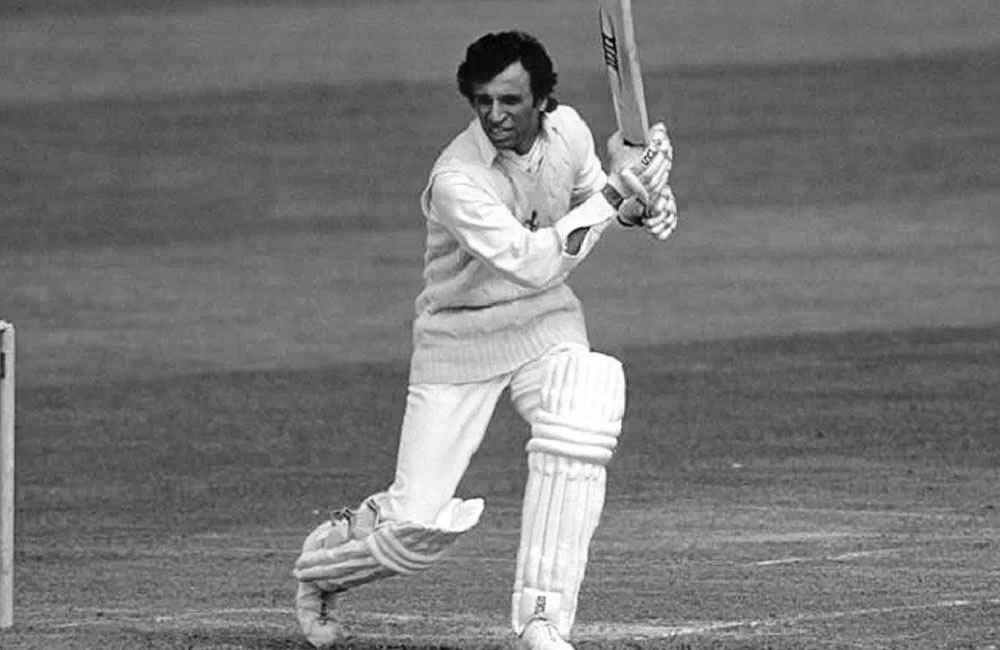
1976-77 twin tour to Australia and West indies is regarded as one the most demanding tour Pakistan ever had where Pakistan played high quality non-stop cricket against the best bowling attacks of modern cricket. The first Test against Australia at Adelaide produced very pulsating cricket where fortune changed on daily basis. Batting first, Pakistan got dismissed for 272 on day one with Zaheer scoring a classic 85 studded with some exquisite cover drive boundaries. In reply, Australia posted 454 with centuries from Ian Davis and Doug Walters. With 182 runs in arrears, Pakistan started their second innings in a much more resounding manner with all top order making a useful contribution. By the close of day 3, Pakistan had posted 140 for the loss of both openers Majid and Mudassar. The next morning, Zaheer continued with his first innings form, but he was dismissed by Dennis Lillee soon after completing his century. Asif, who failed to score in the first innings, joined Miandad at 236-4. Miandad departed with a gritty knock of 54 followed by Imran Khan (5). At 298-6, with a slender lead of 116 and only tailenders to support the last recognized batsmen, Asif had a formidable task at his disposal to bat long enough and give a challenging target to Australia in the fourth innings. Asif found a reliable partner in Salem Altaf as both took the score to 368 putting valuable 70 runs for the seventh wicket before Saleem Altaf was dismissed for 21. The next two batsmen, Wasim Bari and Sarfraz Nawaz went without scoring. At 379-9 with a lead of 197 and almost four sessions still to go, the match appears all in favor of Australia. Asif continued with his fighting innings, ensuring the last batsman and debutant Iqbal Qasim is not over-exposed to the bowling and completed his fighting hundred during the last session of the day. By the close of day four, Pakistan had reached 439-9 with Asif batting on 124. On the last day, Asif kept moving the score towards the safety zone. Finally, when Iqbal Qasim’s wicket fell at 466, Pakistan’s lead was already 285 with Asif remaining unbeaten at 152. The last wicket produced 87 runs at an almost runs-a-minute scoring rate. Asif’s never-give-in approach and meticulously protecting lower order yet scoring runs at every possible opportunity helped Pakistan to set up a good target to chase on the last day of the Test. Chasing 285, Australia was well placed at 201-3 but Iqbal Qasim took three successive wickets within a short period reducing Australia to 228-6. The seventh wicket pair of Marsh and Gilmour did not find scoring runs easy, hence decided to go for a draw ending Australia’s innings just 24 runs short of the victory target.
Majid Khan, 167 vs West Indies, Georgetown 1976-77
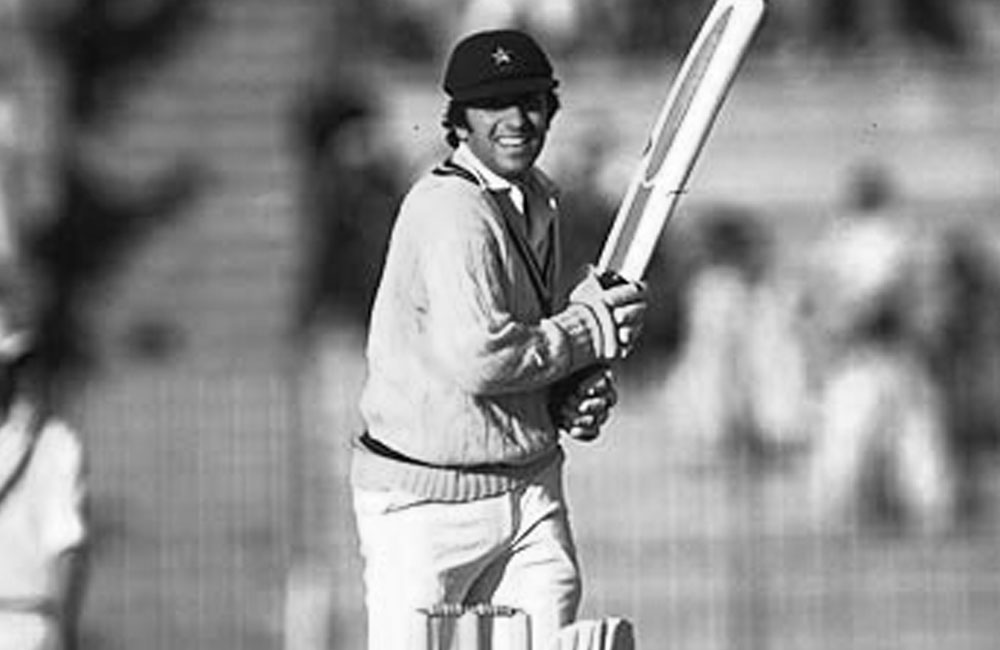
During the second leg of the 1976-77 twin tour, Pakistan batsmen continued to show their brilliance against West Indies’ ferocious bowling attack. On the opening day of the third Test of the five-match series at Georgetown, Pakistan was dismissed by the West Indian pace battery of Robert, Croft and Garner for only 194. West Indies made a strong reply of 448, gaining a first innings lead of 254. Facing the formidable task of saving the match, Pakistan openers started on an aggressive note, particularly Majid who decided to unleash his aggressive instincts on Colin Croft hitting him for four boundaries in his first over. Majid and Sadiq added 60 runs before Sadiq got retired hurt with his score on 22. Zaheer Joined Majid and they put on another 159 runs before Pakistan lost their first wicket at 219. Majid’s reached his hundred with 17 unstoppable cover drives and pull shots. He finally departed with his score of 167 ensuring Pakistan do not become an easy target for the West Indian fast bowlers. Pakistan finished their second innings at 540 thereby not leaving enough time for West Indies to go for the target in the 4th innings. All the three quicks who destroyed Pakistan in the first innings conceded over 100 runs in the second innings with especially Roberts who leaked 174 runs in the second innings got a good hammering by Majid and Zaheer. Majid occupied the wicket for approximately 6 hours and scored his career-best 167 with 25 boundaries, which is probably one of the best innings ever played by any Pakistani opener against one of the lethal pace attacks and that too without any modern-day protective gears like the helmet and various guards all around the body.
Javed Miandad, 102 vs West Indies, Port of Spain 1987-88
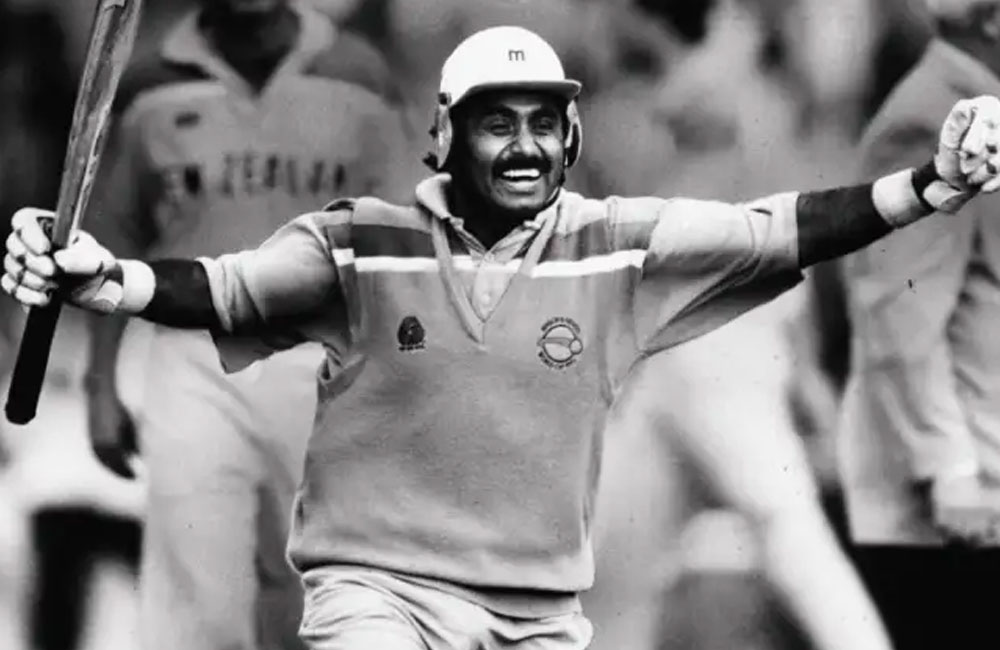
Even after almost a decade into Test cricket, Javed Miandad often faced a serious question regarding his ability to score runs against top-quality pace bowling under alien conditions. The tour to the Caribbeans in 1987-88 eventually proved Miandad is one of the best against any attack under any conditions all around the globe.
His scintillating century in the first Test of the series at Georgetown against the fearsome West Indies four-pronged pace attack of Walsh, Ambrose Patterson and Benjamin helped Pakistan win the test by nine wickets. In the second Test at Port of Spain, he played yet another top-class innings that saved Pakistan from a certain defeat. Marshall’s return further boosted the West Indies’ attack as they got out Pakistan for 194 in the first innings. With centuries from Viv Richards and Jeff Dujon, West Indies set a target of 372 to win in the last innings. Pakistan started badly and soon found themselves reeling at 67-3. Miandad, with his never-say-die attitude, had two match-saving partnerships; first, he added 90 for the fourth wicket with Saleem Malik and 113 for the sixth wicket with Ijaz Ahmad that helped Pakistan secure a draw. He batted for almost 4 sessions, facing 265 balls for a defiance inning of 102 – arguably one of the best innings he ever played in any away Test during his entire international career. His consistency made him a very special and reliable batsman in the history of the game. Javed Miandad is one of the two players (England’s Herbert Sutcliffe is the other one) whose average never dropped below 50 throughout his 17 years career.
Saleem Malik, 237 vs Australia, Rawalpindi 1994-95
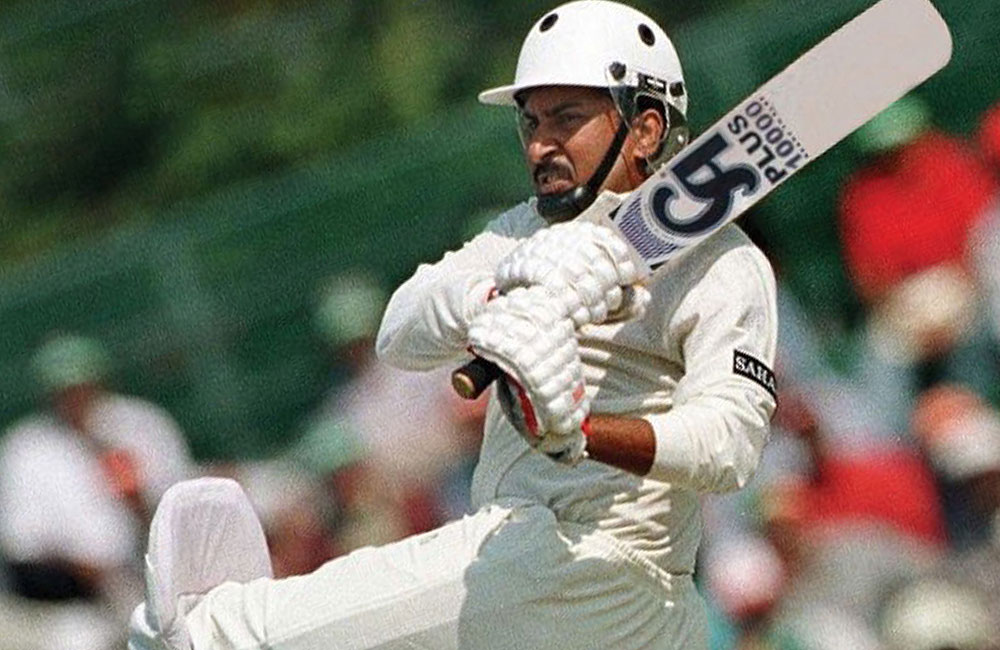
One of the best batsmen of the 1980s and 1990s, Saleem Malik started his Test career in an explosive style scoring a hundred on his debut at the age of 18. A highly dependable top-order batsman who rescued Pakistan on numerous occasions also had lots of controversies attached to his name. The home series against Australia in 1994-95 was the tipping point of his career when three Australian players alleged that Malik had tried to bribe them to underperform on the final day of the first Test. In the next Test, he played one of the best innings of his career rescuing his team from a hopeless position to a respectable draw. Australia piled up 521 in the first innings and skittled out Pakistan for 260. Going into the second innings after follow-on with 261 runs deficit, Malik launched a counterattack with his career-best 237. His first fifty came up in just 49 balls with ten boundaries. His innings – that included 34 hits to the fence – was one of the most courageous match-saving efforts after Pakistan had followed on. Interestingly, Malik was dropped by Mark Taylor – one of the most reliable slip fields – when he was at 20.
This is very unfortunate Saleem Malik is more often remembered for all his shady involvement in match-fixing off the field rather than all his heroic on the field. His involvement and accusation not only came from Australian players but also from many other sources that pushed his career into obscurity.
Ijaz Ahmad, 120* vs Australia, Karachi 1998-99
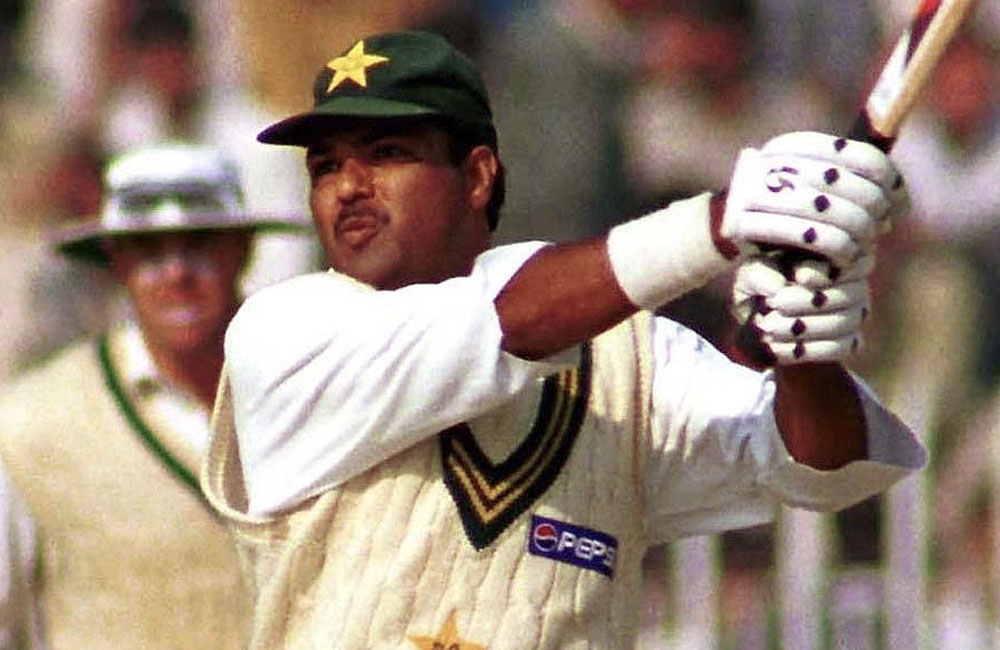
Ijaz Ahmad lacked the flamboyance of Majid, Inzamam or Babar, had a somewhat clumsy batting stance, yet his temperament and resilience made him a solid middle-order batsman of his generation. Remarkably, he reserved his best against the best bowling attack of his playing time. An interesting fact not commonly known is his ability to score runs against mighty Australians. Out of 12 test hundreds scored by Ijaz, six came against Australia!
In the third and final test of the 1998-99 tour by Australia to Pakistan, Australia set an imposing target of 419 on day 5 of the match. There were only two possible outcomes: a victory to Australia or Pakistan batsmen playing out the whole day to save the match. At 35-3 within the first hours of play on day 5, an Australian victory seems a logical conclusion. Mohammad Yousaf also departed just before lunch to make Australia firm favorites. Then Ijaz together with Moin Khan put on 153 runs partnership for the 5th wicket to secure a respectable draw. Ijaz reached his century from 211 balls. He remained unbeaten at 120 when the game was called off after over no. 8 of the 15 mandatory overs. His counter-attacking innings included 16 boundaries.
Kamran Akmal, 109 vs India, Mohali 2004-05
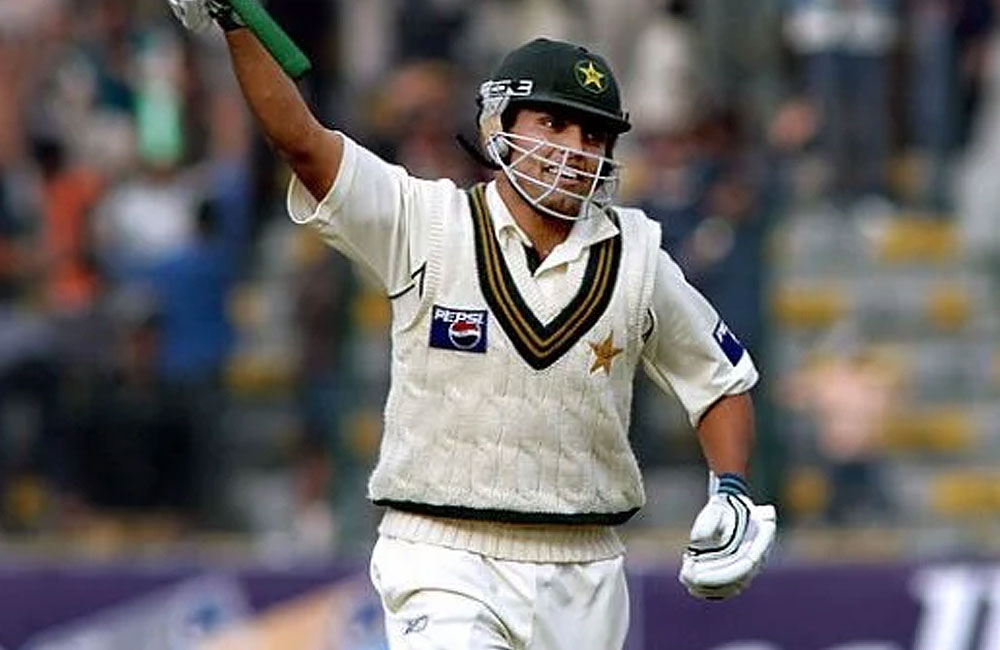
Kamran Akmal is mostly remembered for his numerous dropped catches at vital moments that often cost the game to Pakistan. However, he was an aggressive batsman who played many important innings that saved Pakistan from certain defeats. One of such innings was his chanceless 109 at Mohali in the first Test of the 2004-05 series. With 204 runs in arrears, Pakistan started their second innings in a miserable fashion losing the top three batsmen with just 10 runs on the board. When Kamran Akmal came to bat at number 7, Pakistan’s lead was only 39 runs with four wickets in hand. Kamran and Razzaq dropped anchor and batted for more than two sessions on the final day. In the process, the duo added 184 runs for the seventh wicket in 56 overs with Kamran reaching his maiden test century. This partnership not only saved the game but eventually helped Pakistan draw the series 1-1. It would be fair to say this innings was one of the best played by any Pakistani batsmen on Indian soil.
Shoaib Malik, 148* vs Sri Lanka, Colombo 2005-06
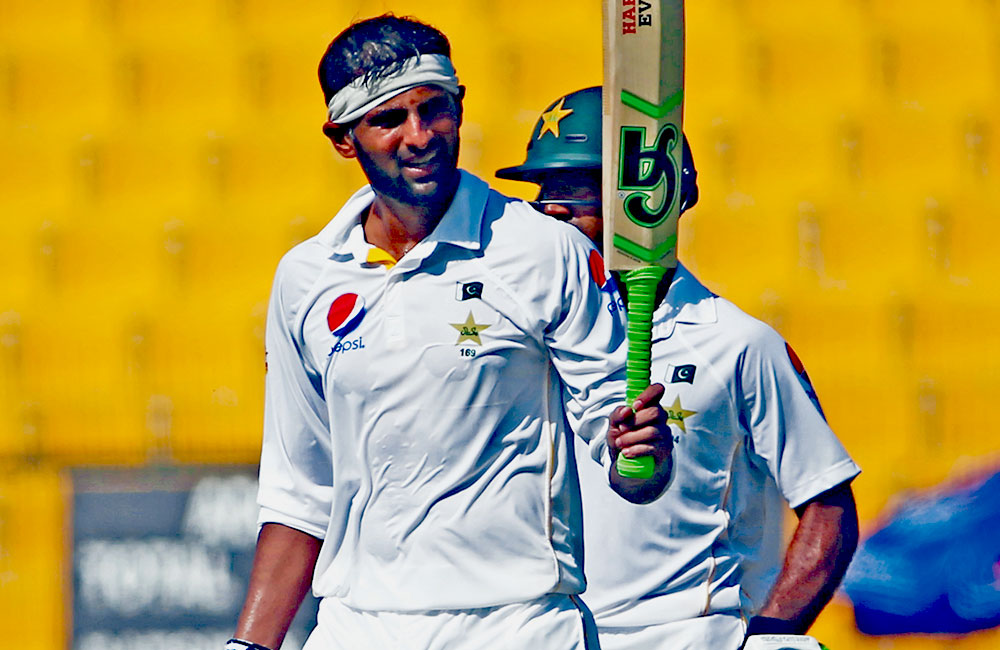
The opening Test of the 2005-06 series against Sri Lanka produced high-quality absorbing cricket. Both the teams got dismissed under 200 in the first innings. Sri Lanka came back strongly in their second innings declaring at 448-5 riding on a scintillating century from Kumara Sangakkara who hit a magnificent 185. Set to chase 458 in the fourth innings of the match, Pakistan’s opening pair of Shoaib Malik and Imran Farhat made a slow but confident start putting on 59 in 27 overs. Shoaib Malik and Faisal Iqbal added 115 for the third wicket in almost 50 overs and another 84 for the fourth wicket with Inzamam that helped Pakistan save the game. Pakistan reached 337-4 in their second innings at stumps on the last day while chasing an improbable 458 runs target. Malik remained unbeaten at 148 from 369 balls and occupied the wicket for a little over eight hours to thwart Sri Lanka. His marathon innings was a classic reflection of temperament and endurance as he showed commendable foot movement against a very experienced Sri Lankan bowling attack.
Younis Khan, 131* vs South Africa, Dubai 2010-11
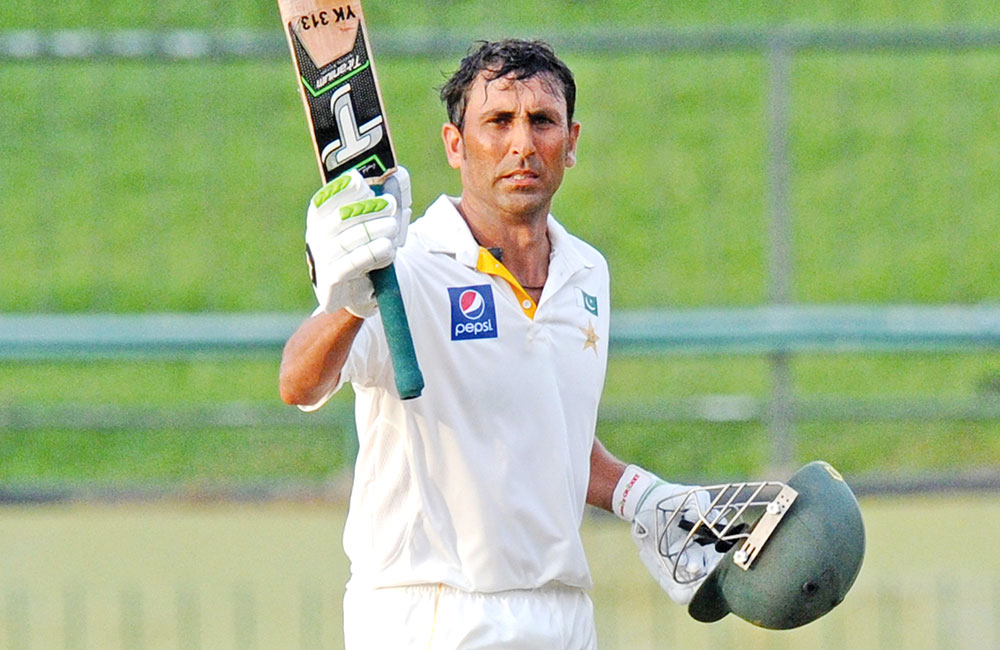
Whenever there is a discussion regarding top batsmen of the 21st century, Younis Khan’s name is often forgotten. His statistics, however, reveal a completely different story. He was not only one of the best produced by Pakistan but surely he stands amongst the greats of modern time. Younis Khan is the only player in the history of the game who scored test centuries in 11 countries! On numerous occasions, his innings made major contributions to winning or saving the games for his country. One of those innings came in the first test against South Africa in Dubai. Set to score a mammoth target of 451 in the fourth innings, Younis controlled the last day’s play striking 9 boundaries and 4 sixes to cruise to an unbeaten 131 to earn a respectable draw. Younis and Misbah added 186 for the fourth wicket unbroken partnership against one of the best bowling attacks of South Africa spearheaded by Steyn and Morkel. Younis Khan’s record in the 4th innings is indeed very impressive. There are only five batsmen who average over 50 in the 4th innings (qualification: minimum 1000 runs) and Younis is among one of those.
Babar Azam, 196 vs Australia, Karachi 2021-22
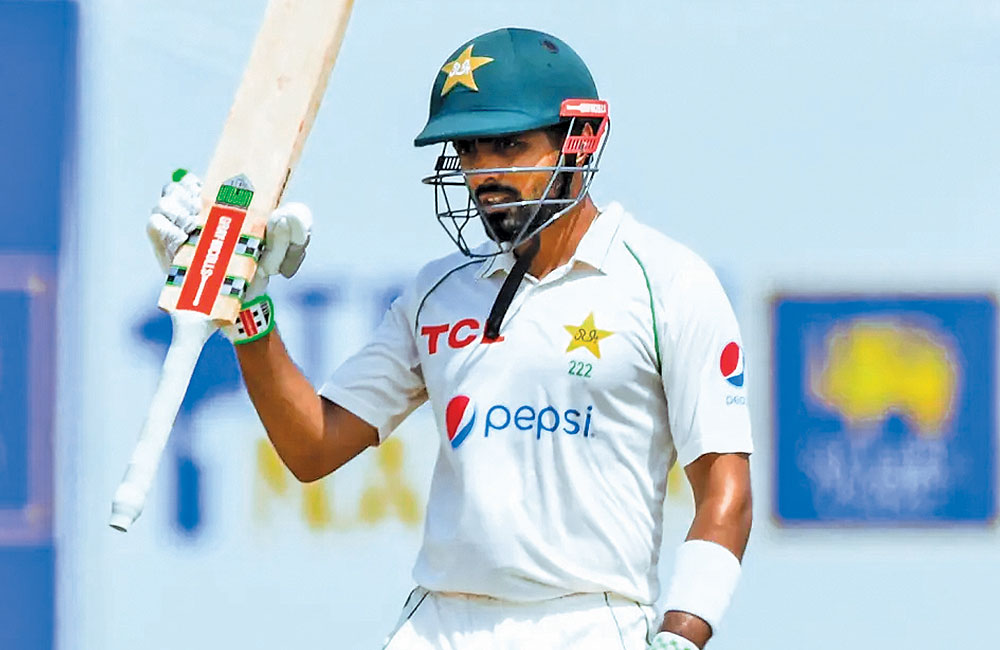
The tour of Australia to Pakistan in early 2022 witnessed some solid batting performance from both sides. In the second Test in Karachi, Australia set a mammoth 506 runs target. At 21-2 in the second innings and considering Pakistan’s dismal show in the first innings, it was expected Pakistan will crumble again, but Babar Azam’s heroic knock not only saved Pakistan from a certain defeat but he came very close to the unthinkable victory target of over 500 in the fourth innings.
The skipper played a true captain’s knock of 196 to stage an astonishing fightback. His innings of 196 helped Pakistan occupy the wicket for almost 6 sessions. He batted for 603 minutes and faced 425 balls. This is the second longest knock in the fourth innings of a Test after England’s Michael Atherton’s 185 against South Africa in 1995 which lasted 643 minutes. Pakistan’s innings consumed 171.4 overs. This is also the second best that a team survived more overs in the fourth innings to save a test match. The most is 218.2 overs by England against South Africa in the famous timeless Test in 1939. Pakistan finished their innings at 443-7 – just 63 runs short of the victory target. Babar got able support from Abdullah Shafiq (96) and Mohammad Rizwan (104). Interestingly, no other batsmen managed a double-digit score. He was given a standing ovation by the crowd and his teammates. The entire Australian team also applauded for his outstanding performance as he returned to the pavilion just four runs short of 200.
Virat Kohli, I first saw batting while he was representing the India U 19s in England in July 2006. It was the 1st Youth ODI at Derby, a day and night match. India U 19s batted first. I was there purely on the insistence of my late ‘memorabilia collector’ and a close friend Dr. Khadim Hussein Baloch. He had driven me to Derby in his bottle green BMW and seemed excited to watch youngsters in action. I must say, I had yawned a bit however, purely for Kim’s happiness I had to be with him. India U 19s batted first and as I recall they had an impressive wicketkeeper/batsman Uday Kaul who was in the runs. His confidence was eye-catching, so was the technique and method. Dogged and developed in a typical opener’s vain, he consumed about 100 balls to post a conspicuous 62. He had twice been tested by future England Test fast bowler Steven Finn.
Tall, Finn had him entangled negotiating short-rising deliveries. However, Uday a typical left-hander made amends and thumped a few outside the off-stump shots. He was a product of well-organized pathways. He had represented Punjab U 14s, stepping ahead to Punjab U 16s prior to being chosen on the India U 17s. Back to local cricket, he showed enormous potential while turning out for the Punjab U 19s and his performance saw him touring England with the India U 19s. That he also played for India A is true nonetheless, he failed representing his country in international cricket. There were quite a few impressive players I witnessed that fateful evening. Apart from Uday, I saw slightly chubby, innocent looking batsman from Delhi walking out to bat joining his captain Tanmay Srivastava, another delectable left-hander. The chubby boy soon left everyone startled. How he started with a straight drive and then cut one fiercely past backward point. He was something special. His was not a normal talent. His balance, bat speed and quickness of the eye caught our attention. I liked the bloke. Seeking more information, I was told he was from Delhi and his name was Virat Kohli. Tanmay left India at 181 for 4. Virat took the centre stage and ended up with 64 not out. I remember Ishant Sharma and Shahbaz Nadeem also played in the game and another cricketer of Indian descent Varun Chopra captaining England U 19s had been impressive with a fighting half-century.
We were fascinated and when Kim decided to take me to Cardiff, this time a train journey from London I didn’t make faces. I was eager to see Virat bat again. To our dismay chasing a paltry total India U 19 openers had their day. Requiring 165 to win in 50 overs, they overhauled the target in about 29 overs with nine wickets to spare. Parvez Aziz, a left-hander from Assam 79 and Uday Kaul 58 not out put on 125 runs for the 1st wicket. Parvez was out off Moeen Ali, another star in the making from England. He had sealed the fate of the match with an enterprising and a whirlwind innings. Uday and Sumit Sharma took India home. Virat didn’t come out to bat. We returned missing to see a mature 40 from Virat in the 3rd Youth ODI, also played at the same venue. He ended the triumphant tour with an overall average of 105.00 in the Youth ODIs and 49.00 in the three match U-19 Test series.
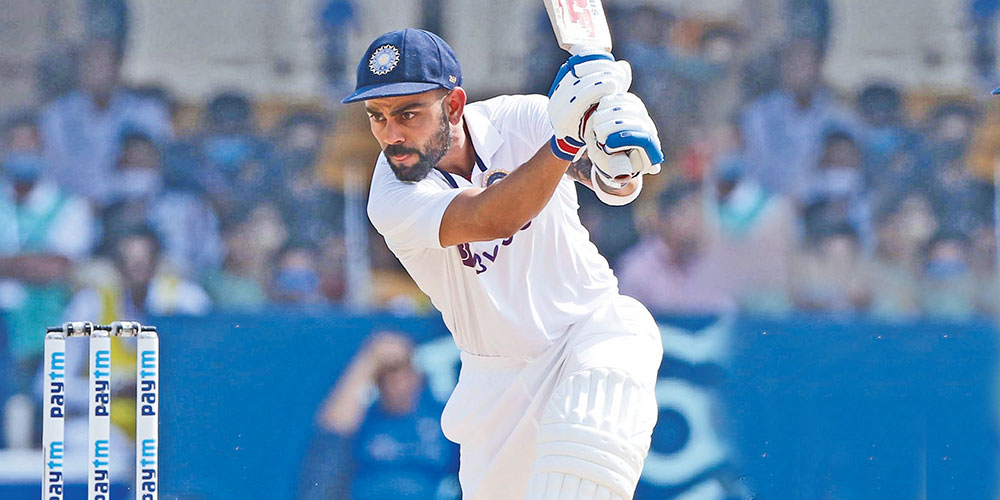
In September 2006, India U 19s toured Pakistan providing me an opportunity to see Virat even closer. I boast having his India U 19s shirt signed by the entire team. It is still part of my memorabilia collection. Interestingly, Uday Kaul was relegated to number three and a newcomer Cheteshwar Pujara technically apt and with a solid defence made an impression. The line-up also included Ravindra Jadeja, Shahbaz Nadeem, Piyush Chawla and Ishant Sharma all future India Test and International players. At Lahore, in the 1st Youth ODI, Virat didn’t score, the innings was dominated by Uday Kaul 67 and Sumit Sharma 65. Kohli posted a cautious 45 at Sheikhupura which I didn’t see. Back to Lahore for the 3rd Youth ODI, India Up 19s had a brilliant day out rattling an impregnable 298-9 in 50 overs. Losing Sunny Sohal and Uday Kaul early, Tanmay Srivastava (88) and Virat Kohli (80) batted munificently. By this time, I had fallen in love with Virat’s masterly stroke play. He batted beyond his years and his mental strength was impregnable. It seemed he had an astounding international career beckoning. He was different from the other players on both the teams. Wristy and flamboyant, his balance was near perfect. He only required fine tuning before breaking into international cricket. He averaged 58.00 in the unofficial Tests and 41.66 in the Youth ODIs. In April 2007, he was brought to international cricket. He debuted in T20 Internationals. He launched himself, ready for big time cricket by capitalizing on India U 19s tour to Sri Lanka and in the triangular series (India-Sri Lanka-Bangladesh) and the two Unofficial Tests. Kohli as India U 19s captain spurred them to an emphatic ICC U 19 World Cup held in Malaysia in 2008. In the final versus New Zealand, Virat picked 2 wickets and scored 43 in the run-chase returning with man of the match award.
With 70 International centuries, Virat had become an icon. Supreme fitness, toughest nut to crack, mentally strong and someone who was a batsman with an unsurmountable talent. His skills, balance, timing, and ability to win matches single-handed turned him into a heartthrob. Someone who had scored 90 for Delhi asking the family to delay his father’s funeral, Virat’s professionalism, his personality, and the determination to change mindset of Indian players took him a long way to be termed as India history’s most successful captain in Tests. Across all formats, Kohli captained India in 231 matches and his team won 40 out of 68 Tests under his aggressive and unforgiving captaincy. Such was his finesse, elegance, and appetite to dominate world cricket that having made his debut in Tests in 2011, a product of well-honed pathway, he became number 1 batsman on the ICC ODI Rankings in 2013.
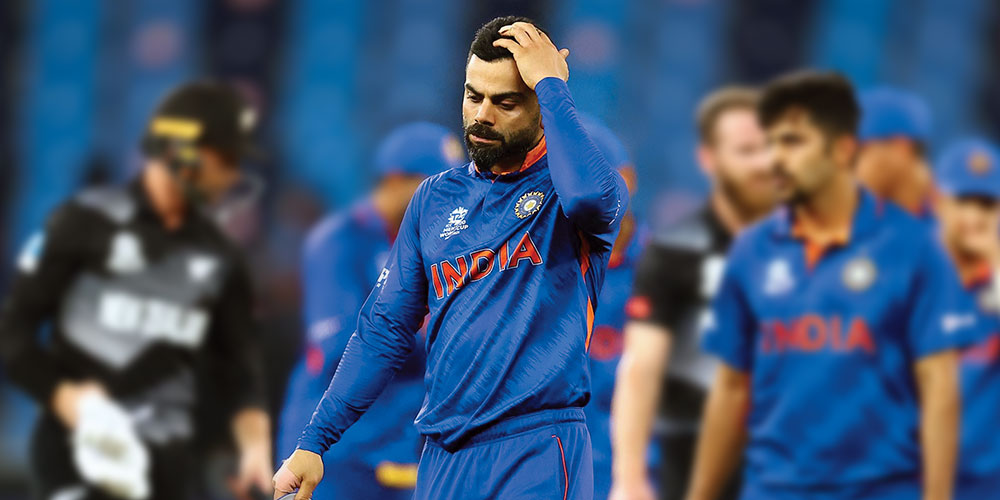
Twice, he was man of the tournament in ICC World T 20 cups (2014 & 2016) and was the fastest to 23000 International runs across all formats. He won the Sir Garfield Sobers Trophy (ICC Men’s Cricketer of the Decade- 2011 to 2020), Sir Garfield Sobers Trophy (ICC Cricketer of the Year in 2017 & 2018), ICC Test Player of the Year (2018), ICC ODI Player of the Year (2012, 2017 & 2018) and Wisden Leading Cricketer in the World (2016, 2017 and 2018) besides picking up the Arjuna Award in 2013, the Padma Shri (Sports) in 2017 and the Rajiv Gandhi Khel Ratna Award in 2018. In 2016, he was nominated as one of world’s most famous athletes by ESPN and one of the most valuable athletes’ brands by Forbes. In 2018, Time magazine recognized him as one of the 100 most influential people globally. In 2020, he was 66th highest paid athlete in the world with estimated earnings of over USD 26 million.
Since 2019, he started to stutter and seemingly lost his medias touch. None could ever believe that he will struggle to score runs in international cricket. None could imagine Virat will continue without a century in Tests for almost three years. With the arrival of Sourav Ganguly as BCCI’s President, he lost his captaincy in One Day Internationals while he resigned as India’s T 20 and Test captain. Virat was slithering into darkness. From the top of the pyramid, he seemed tumbling down. The fall hasn’t stopped. What could be the reasons? I won’t be talking about numbers rather I will assess his slump in form and inability to regain his consistency from another angle. It must be dismaying for Virat though his exuberance, a real team man, his presence can’t be challenged still his future hangs on the fringes.
It is also equally frustrating for us to see him hapless. Just imagine, a struggling Kohli in England must have not endorsed how he was dismissed in both the innings at Edgbaston in a losing cause. How he misjudged and dragged one in and consequently found that even the Gods didn’t come to his rescue when Sam Billings dropped the catch only to be picked in the slips by Joe Root off a rebound in the second innings of the recently concluded 5th Test at Birmingham. He seemed losing his method, technique, and balance. Is he mentally saturated and caught in a vicious spell is a question that needs an answer? Has he lost all incentives having seen the world right from the top? It seems grey somnolence ridden clouds are hovering over his career.
I must acknowledge, it seems he hasn’t stopped working hard. Practice, training, and full commitment still he is unable to unlock the door even on flattest of strips against manageable bowling. At least I could never contemplate Virat will be attempting to survive, wafting and seemingly vulnerable out there in the middle. The situation he has slipped into seems innocuous. He seems putting his head down and pondering, like concentrating to catch the fish after many failed attempts and fails again. I have seen Kohli inattentive, losing the sight and suddenly showing a philosophical state of mind, wistful. He needs to sit back and decide about what to do while it’s happening to him. He may well cogitate and try getting the solutions. Has he had time to focus on himself rather than his cricket?
It isn’t a moral issue. It is all about the waning dominance. His work ethics are unquestionable still there is a vacuous or an empty area that needs to be explored which neither falls in black or white not even in grey. The picture has darkened. His cricket has been more than skills or an undefinable talent. How should he proceed? He must return to basics and make his method simple. Is it about mental exhaustion? Is he demotivated or tired? His expressions, the body language is still contrary to his loss of form. He must seek answers about how he should solve the puzzle. It is quizzical still. He should introspect, without concern, the nature of, say courage or concentration or self-belief and he must be able to see everything that has gone wrong. It seems from one series to another, he has been carrying the burden, self-guilt of not contributing to his full potential for whatever reason, his show being nebulously inadequate and murky. It is also true that in adversity are the solutions to return to pre-eminence, the interconnected resolve surfaces, the first is that the quest to recreate virtue. It must be for now his only meaningful purpose in life.
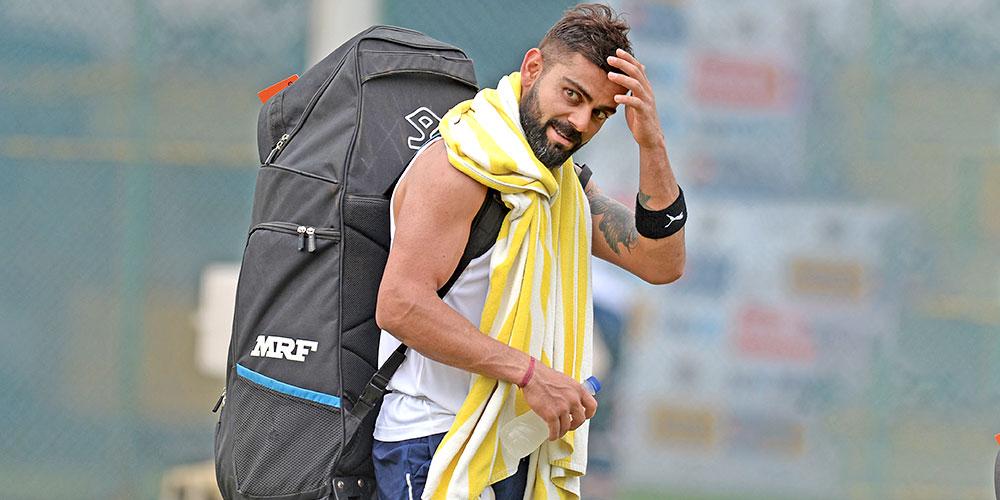
The second is that excellence is his trademark. Other things that may appear attractive – wealth, power, money – are deceptive. Living extravagantly on the field is the only way to joyousness Kohli has been habituated to. And the third is that introspection and the corrective measures taken. He must ask himself what’s failing him? Is it the end of the road or is it a temporary phase which shall pass? He has been put on trial which he hasn’t been accustomed to. He needs to break the shackles to spirit himself away or decide getting lost into oblivion. It’s not a question about his reputation, the man he is and the iconic dimensions he has added to cricket. It is about a zillion people who dream to see him bat. He must do it for his fans, the real connoisseurs of cricket, orthodox, the unorthodox, experts, commentators, coaches, stakeholders and for all of us. He should take the challenge and try to get it back. He isn’t the type to concede and it’s ironic to see him struggle. He is a champion and not the one consuming the poisonous parsley and dying on his knees.
He must explore the unexplored avenues, and to find out what his strength is? Currently, he is seemingly making false attempts to notice a frail sleuth, an illusory reality. He created his own images and believed them to be true. He does it because it has given him unprecedented success and the real taste of seeing everything turning into gold. Failure was unknown to him. He has lived in a world he created by achieving the unachievable, the space of the flawless configurations and doubtless has an inexplicit reminiscence of how failures were enveloped to be interchangeable. Majority of the people are still sure their man Kohli would return to the avenues from where he really belongs. None is ready to stop believing in him. There are some resorting to mocks and acerbity. It’s not an alluring view; the recluse disdainfully shouting from beyond the boundary.
So where does all this leave Virat Kohli, still perched in that world of the judgmental? The answers are interim. This contention isn’t going to end. It’s not everlasting, it will be decided in the next few months. Virat’s real predicament is to match his own standards. He must return to excellence before he calls it a day. He has seen a full life as a world star, a hero, an icon and now going through times employing complications and unsuccessfulness. He must think through the options. He must make a choice. What he is? A batsman whose stroke play is still sight for the gods. Come to think of it, Virat won’t die without getting it back.
I have been delving deep into cricket’s early history in preparation for a book with Peter Oborne on the game’s first seven centuries. I should really say pre-history, because almost none of it is documented, and what documents there are do not have scorecards and match reports, although one or two carry the early equivalent of action photographs.

For England, the search carried me to 1300 and a teenager who just might have been the first royal cricketer.
This was Edward, son of Edward I. As an infant, he was proclaimed Prince of Wales by his father after he had defeated the last independent Welsh ones. He would eventually succeed him as Edward II. The king’s account books for 1299-1300 show a payment of £6 to one Lord John of Leek for helping his son to play games with his friends. The only game mentioned by name is called Creag. It is not certain that Creag was any form of cricket, but the great scholar Major Rowland Bowen said it was, and that is good enough for me. The late Major Bowen has a unique reputation among sporting historians. He deserves a history of his own. He was an eccentric who once amputated his own leg, almost as if to prove that he could, and then calmly informed the ambulance service that he had. He quarrelled and feuded with other historians and statisticians and founded a journal of his own so that he could cancel the subscriptions of those he disliked. But he was also a radical of great integrity, and an anti-racist when most of England’s cricket Establishment were colluding in apartheid.
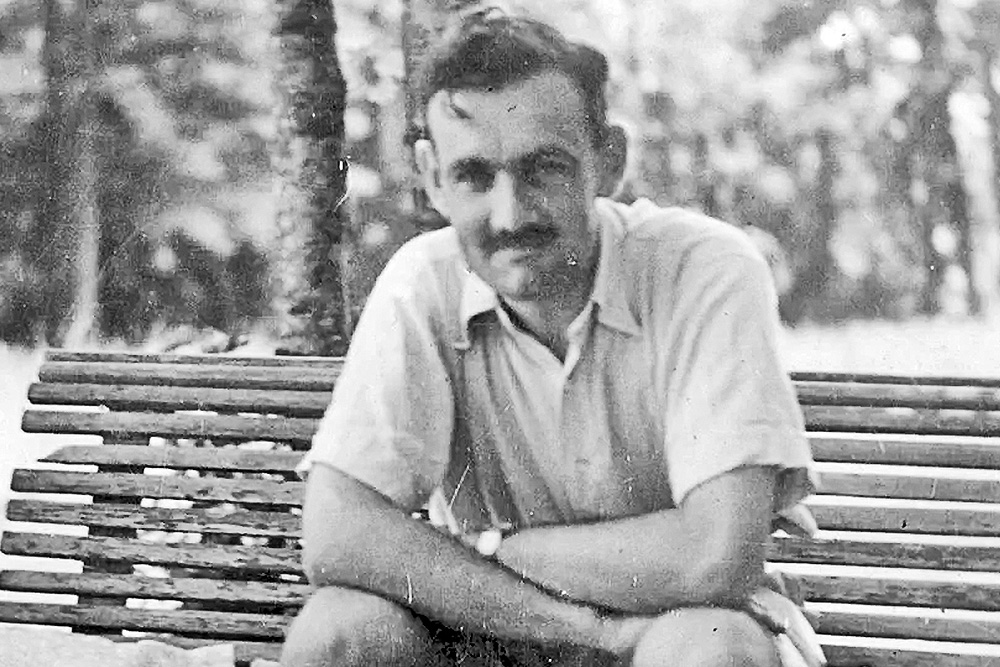
On the authority of Major Bowen Lord John of Leek was the first cricket coach in history. If so, he was also the best paid in history. Six pounds in 1300 was a staggering engagement fee. It would have bought him 7 horses or 13 cows and represented 600 days’ wages for a skilled tradesman.
In the Victorian age, cricket became identified as a manly game for upper-class boys and perfect training for them to conquer an empire and govern it. Unfortunately cricket (or creag) did not do the same job for young Edward. On the contrary, he was regularly criticised for his love of common sports including swimming, wrestling and rowing, in the company of low-born people. He and his cricket chums would never have got into the Pavilion at Lord’s. That said, one must discount a great deal that was written about him in his time. As King he fell out with the Church. This was the main source of history and kings never got a good match report if they fell out with the Church. Worse still for Edward, he was deposed, and his queen and her lover then ruled England, in the name of their teenaged son, Edward III. Of course, deposed kings were accused of all sorts of crimes and misdeeds, including playing cricket, to justify the takeover by their successors. Edward III had a long reign and was keen to show that he was nothing like his father. In 1369 (long after he would have retired from playing cricket) he actually tried to ban it, and all others like it in an ordinance against “pila baculorea”, which is usually translated “club ball” but is generally taken to refer to a series of games in which a ball was hit by a stick.
Twenty-five years earlier, across the Channel in Flanders (present-day Belgium) an artist called Jehan de Grise illustrated a book on The Romances of Alexander the Great. In this, he produced the first image of something which looks like a organized game of cricket. It is now in the Bodleian Library at Oxford University. It shows a nun about to throw a ball at very close quarters to a left-handed monk swinging a bat. Her delivery looks easy to hit but there is a quartet of monks and nuns waiting for a nick in the slips.
It is striking how many women are playing this game, but they would disappear from any published narrative or illustration of cricket or any game like it for the next four hundred years.
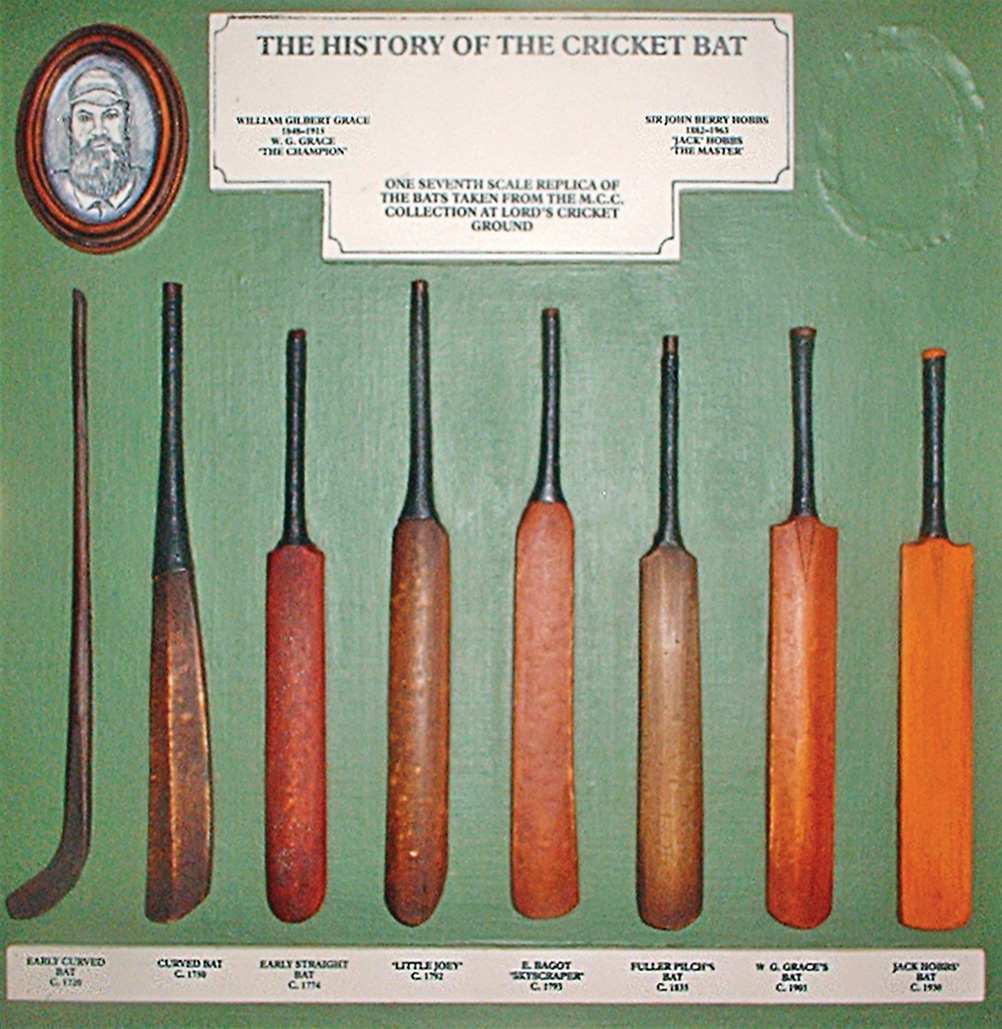
Cricket’s early history, at least in Europe, is made up of fragmentary references to games which might be something like cricket and glimpses of people playing them. There seem to be all manner of local pastimes in which someone hits a ball with a stick. Some might be the ancestors of cricket but they might also have evolved into rounders or baseball, golf, field hockey and surviving variant forms such as stoolball.
I did come across a fascinating theory that the entire family of stick-and-ball games came to Europe from the territory of present-day Iran, Pakistan and India. Their common origin is indicated in the surviving game of gilli-danda. This theory notes that neither the Greeks nor the Romans, the founders of Western civilization, played stick and ball games and suggests that Western Europe learnt them from the Romanies, and other migrants, and through a well-developed network of trade.
Pakistan has brought much innovation to cricket, notably the art of reverse swing and the creation of tapeball. It would be wonderful to think that it was part of its birth.
In the ever-evolving landscape of cricket, one thing has become increasingly clear: the game is undergoing a transformative phase, demanding more dynamic players who can excel in all formats. With the emergence of trailblazing teams like England, the rest of the cricketing world finds itself in a captivating race to catch up and redefine their approach to the sport.
A 360-Degree Batting Revolution
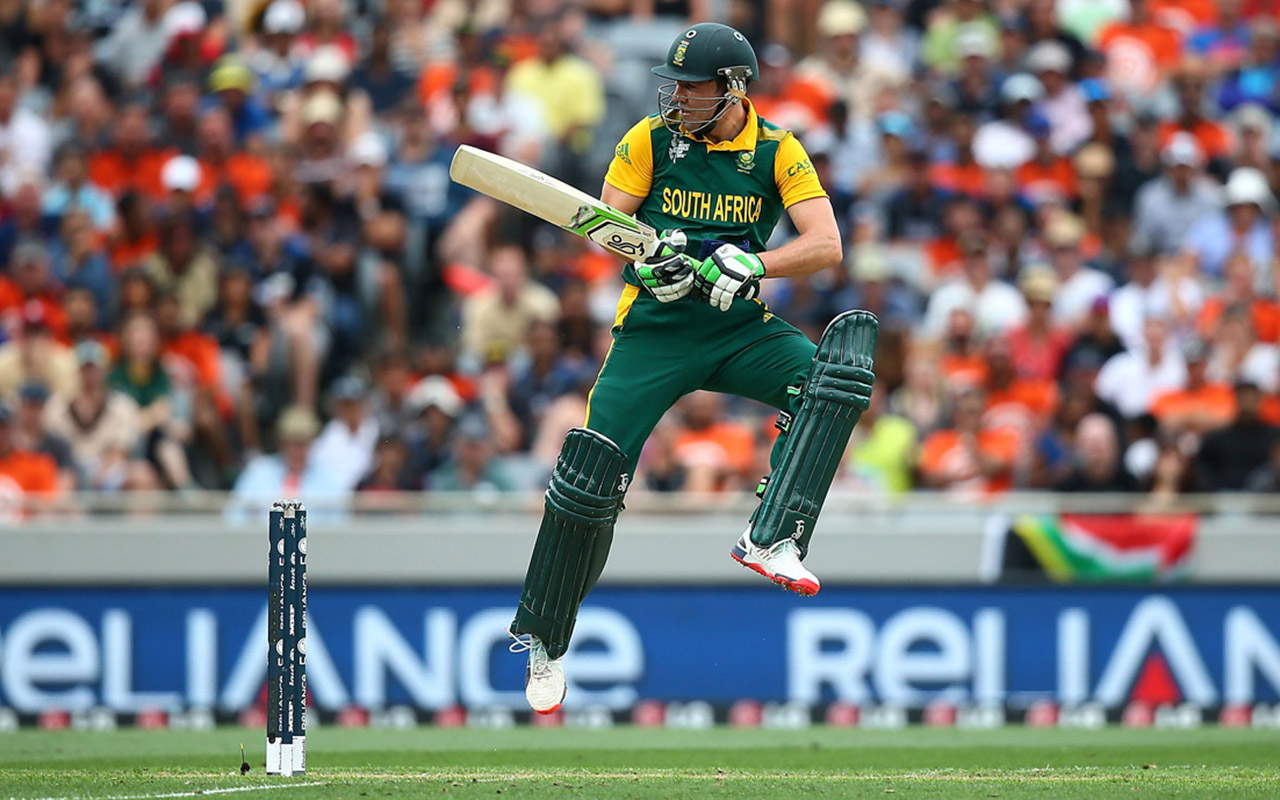
Modern cricket demands batsmen who can adapt swiftly to different formats and thrive under diverse conditions. The concept of 360-degree batting has taken center stage, where players are expected to strike the ball effectively from all angles of the field.
England has been at the forefront of this revolution, boasting batsmen capable of unconventional shots and high strike rates across formats. This versatility not only keeps the fielding side guessing but also puts pressure on bowlers to constantly innovate.
Bowling’s Need for Speed and Ingenuity
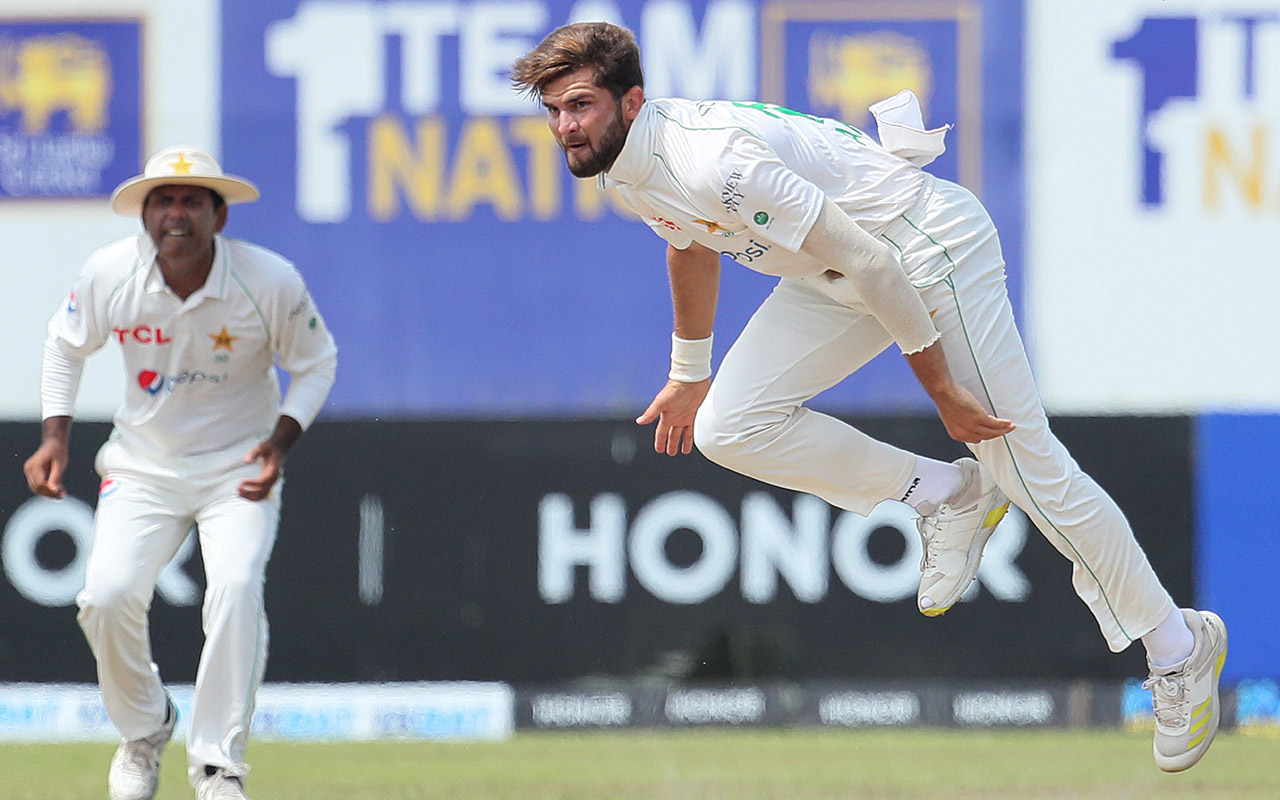
Bowlers, too, are being challenged to embrace speed and variations in their arsenal. The requirement for quick bowlers who can deliver thunderbolts while seamlessly transitioning into a spectrum of variations has never been more crucial. Teams are striving to find the perfect blend of raw pace and unorthodox deliveries.
The Enigma of Spin and Fielding Prowess
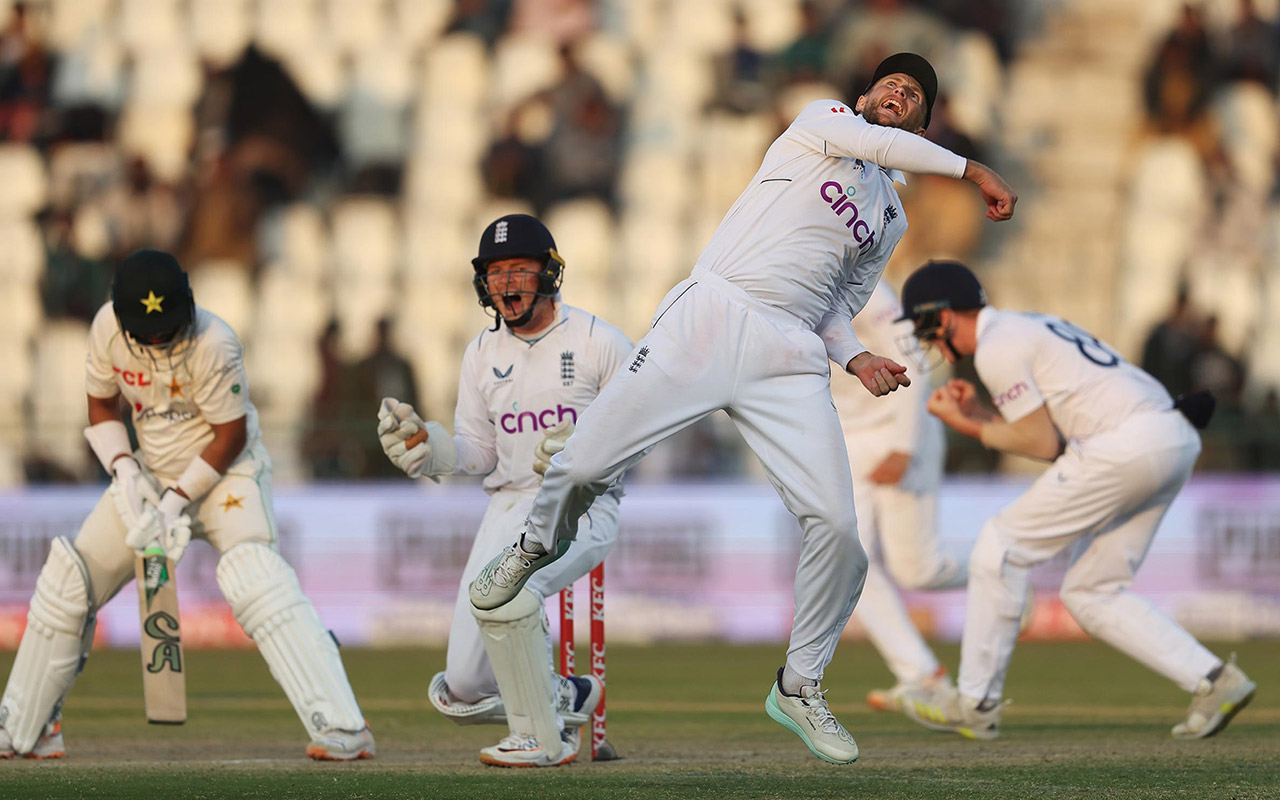
Spinners are no exception to the demand for diversity. The era of the mystery ball has arrived, where spinners are expected to possess baffling deliveries that defy batsmen’s expectations. Alongside this, the emphasis on fielding prowess has never been higher. In modern cricket, every player is a fielder, and teams are looking to cultivate line-ups with 11 agile fielders who can field anywhere on the ground. Anticipating a future where fielders might even throw with both hands.
Pakistan’s Path to Modernity
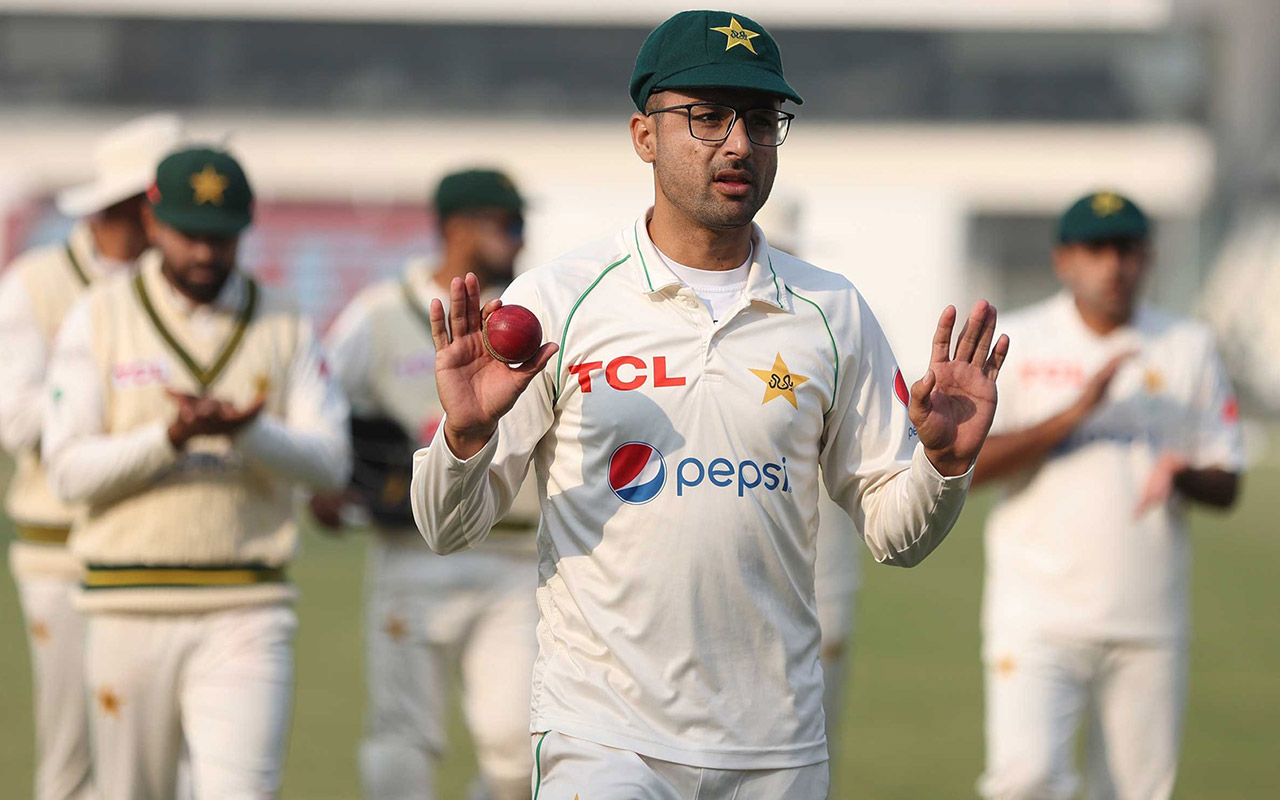
Pakistan finds itself blessed with a rich bowling heritage, boasting an array of fast bowlers with pace and variations. Additionally, young spin talents like Abrar Ahmed and emerging Chinaman bowlers point to a promising spin department.
While Pakistan’s batting formula has worked well, adapting to the changing demands of modern cricket will be the next challenge. The rise of players like Muhammad Haris and Saim Ayub exemplifies the quest for dynamic batting talents.
Embracing the Attacking Formula
The success of England’s attacking formula has been nothing short of remarkable. Their aggressive approach has paid dividends across formats, setting a benchmark for other teams to aspire to. In the pursuit of victory, adopting such strategies becomes imperative, although this transition won’t happen overnight. The pathway involves investing in domestic cricket, nurturing versatile players, and fostering a culture that welcomes innovation while removing the fear of failure.
Indeed, adopting an attacking mindset and having a proactive captain are crucial elements in modern cricket. These qualities can make a significant difference in a team’s performance. It’s essential for Pakistan’s team management and captain to prioritize these aspects to achieve better results. We have seen that missing in the past and the Pakistan /India game in Asia cup is a latest example.
The dynamics of modern cricket are reshaping the game’s landscape. The call for versatile batsmen, bowlers with pace and variations, and spinners with mystery deliveries has become more resounding than ever. England’s exemplary approach has set a new standard, and teams worldwide are racing to catch up. The path forward lies in investing in talent development, embracing innovation, and redefining the norms of cricket. As the sport continues to evolve, one can only anticipate the exciting possibilities that lie ahead.
Pakistan cricket team are at the Lahore airport to depart for India to participate in the World Cup. The travel contingent consists 18 players and 13 player support personnel. Morne Morkel will join the team in Dubai. Mickey Arthur will join the team in India. Pakistan are scheduled to land in Hyderabad, India at 8:15pm (local time) on 27 September.
The National Cricket League (NCL) proudly marked its grand launch and announced its Dallas headquarters at a prestigious press conference held at Dallas City Hall’s Flag Room. The event was inaugurated by Mr. Eric Johnson, Dallas Mayor, in his office.
During the press conference, Mr. Eric Johnson (Dallas Mayor) along with Mr. Arun Agarwal, Chairman National Cricket League, and Mr. Azhar Qasmi, CEO of NCL, unveiled the coveted trophy, symbolizing the league’s commitment to excellence and sportsmanship.

The occasion witnessed the presence of renowned dignitaries and celebrities, including Mr. Haroon Lorgat (former ICC Chairman), Mr. Ameer Ali Rupani, Mr. Hafeez Khan, Mr. Sharjeel Surani, Mr. Abid Latif Khan, Mr. Asif Virani, Mr. Noordin Ismail, Mr. Abid Qureshi, Mr. Younus Salman, and Mr. Asif Jamal (COO ARY). Adding glamor to the event, Bollywood celebrities like Ms. Diana Hayden (former Miss World), Ms. Malika Sherawat, Ms. Mannara Chopra,(Bollywood Film Actresses) and Mr. Saud Qasmi (Lollywood Film Actor), along with cricketer Mr. Unmukt Chand, graced the occasion with their presence.
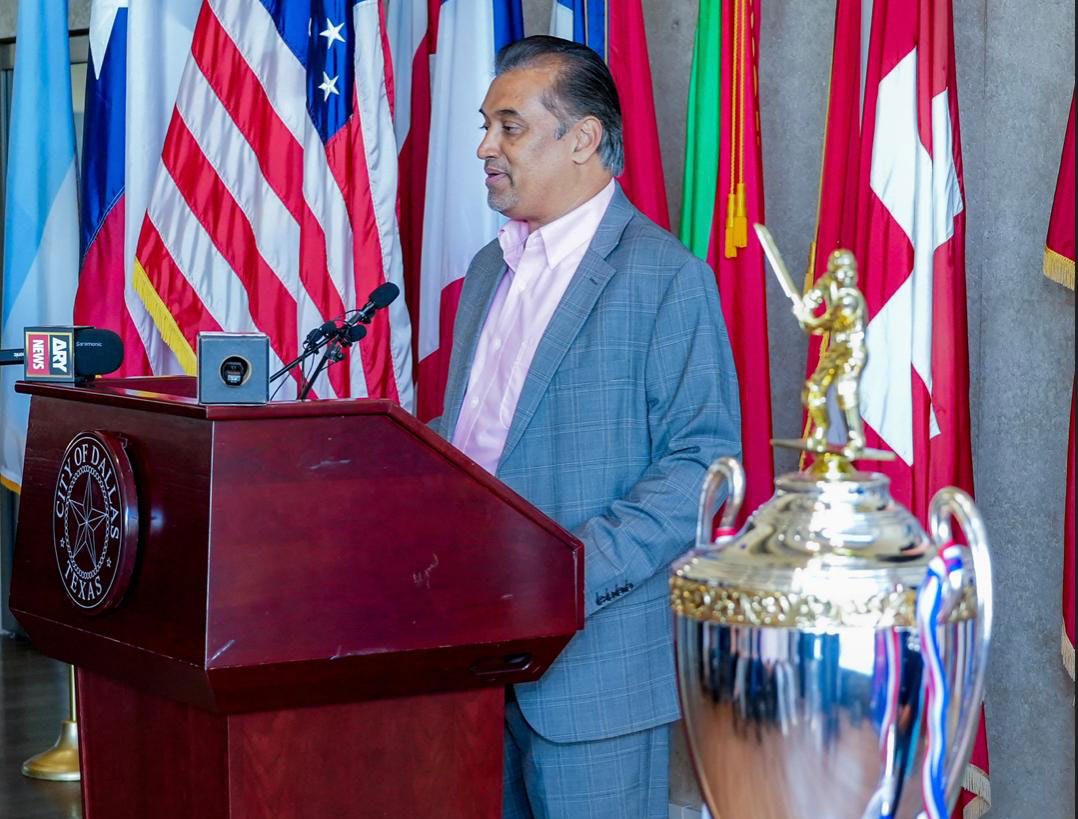
The NCL introduced an exciting “Sixty-Strike Format” to the United States, owned by American business enthusiasts in which 6 Teams from all around the world including International players, Coaches and Mentors will participate.
This 10-power-packed overs game is scheduled to be played at the Broward County Stadium in Lauderhill, Florida, from December 19th to December 29th, 2023. Cricket, the second most popular sport played globally after soccer, is set to captivate American audiences as international sports. Drafting for the league’s teams is slated to take place in mid-October 2023.

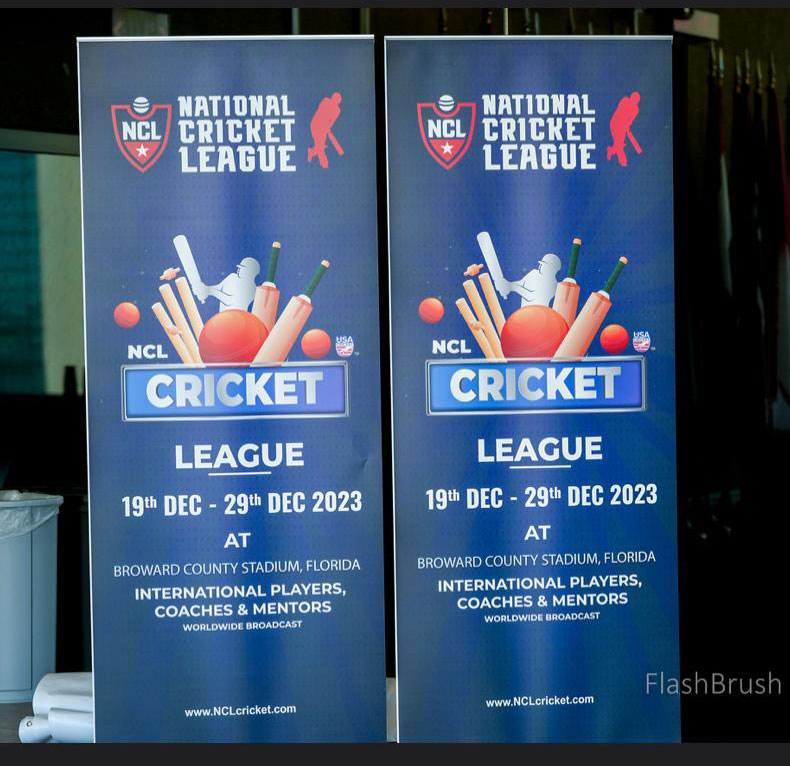
The celebrations continued into the night with a musical evening hosted by the entire National Cricket League team at Dallas Palm, where more than 150 guests were entertained by the melodious tunes of the renowned singer, Mr. Tanmay Chaturvedi.
The event was a resounding success, with the audience thoroughly enjoying the festivities.
The National Cricket League’s grand launch and Dallas headquarters announcement mark a significant milestone in bringing the excitement of cricket to the heart of the United States, and it promises to be an unforgettable journey for sports enthusiasts and cricket lovers alike.
The IPG Group Pakistan’s league management team has successfully launched the T10 Dubai league, along with complete management of the Pakhtoon, Punjabi Legends, and the Sindhis team. They received the most recent accolades in winning the bid for the sales media & and management rights for Lanka Premier League (LPL) and Singapore T10 League, expected to be launched in 2024.
The activation and digital arm of the company functions under ‘Out & About’ with a specialized cell for activation, LIVE streaming, digital highlights, ball-by-ball update technology, and sports social management.
After the success of the first-ever official HBLPSL Fantasy League, the IPG Group Pakistan’s in-depth digital sports experience continues to come up with innovative integrations such as virtual cricket activations and offer customized digital sponsorship opportunities in major leagues such as HBLPSL and LPL.
The IPG Group Pakistan launched its first-ever night cricket tournament in the UAE in 2017, targeted towards the blue-collar residents in the month of Ramzan. The response and effectiveness of the activation were undeniable.

“We were all quick to realize that cricket once again can serve as a unifying sport for our people,” observes Jawad Ghulam Rasool, CEO, The IPG Group Pakistan & Out & About.
In the following years, the IPG Group Pakistan, along with Out & About (partner company), initiated a specialized cell dedicated to refining communication and access to the labor camps targeting the KPIs of the remittance industry.
“When our friends from HBL approached us to take on our first-ever remittance project in the UAE, we knew that this is a special market and that a simple kiosk and a handful of BAs won’t be enough. The brief was simple – educate blue-collar Pakistanis on the legal money-sending channels to Pakistan. The approach needed thought and understanding of the targeted community. We quickly realized the gap for light moments for the blue-collar worker. This is a sector that makes a considerable contribution to Pakistan’s economy but unfortunately is also the most neglected. This required a sensitive approach.” Added Jawad Ghulam Rasool.
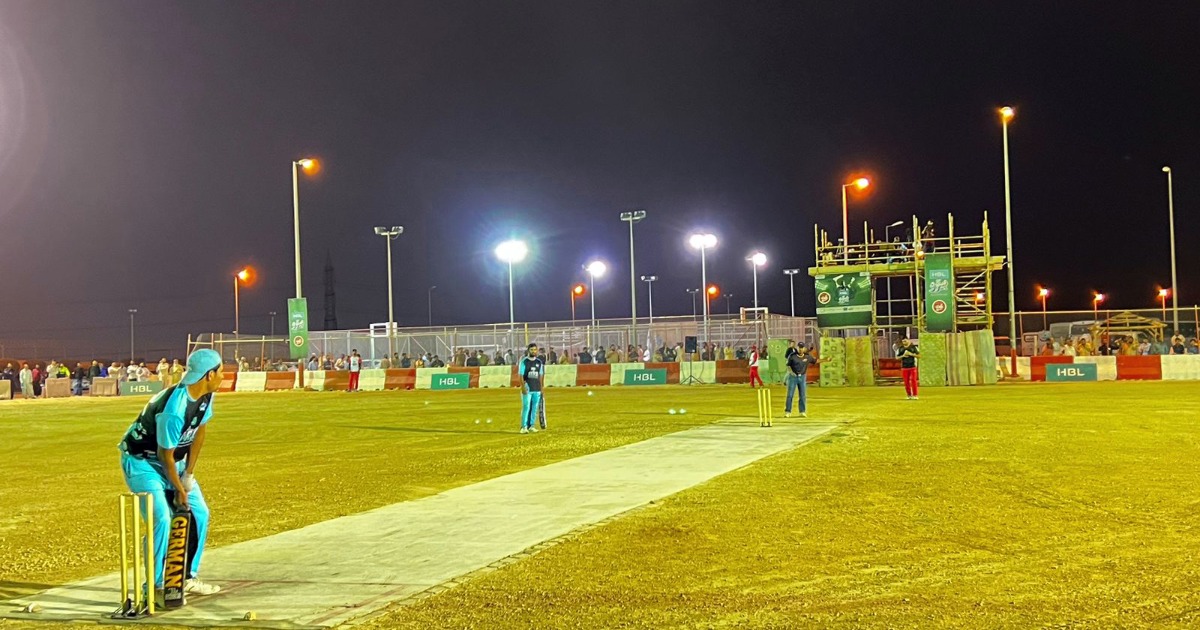
The concept of HBL KA HERO came to life, and the second leg of the campaign was launched in March & April this year. HBL officials shared their views on the remittance drive.
“The effort is to recognize the contribution of the overseas Pakistani Diaspora in channelizing the legal flows. This is the first time that we have combined a festival with sports. The IPG Group Pakistan has served as a great partner to execute this vision and supported us in creating inroads whilst building a relationship with our customers-being a specialist in sports and events. The success of the drive is a true testament that commemorates well with our ethos of enabling dreams….” commented, Syed Ahsan Abbas – Head Global Remittance – HBL.
About HBL KA HERO with Jawad Ghulam Rasool (CEO, The IPG Group Pakistan & Out & About)
Tell us a little about the event strategy?
Tape ball cricket culture is at the heart of Pakistan. It made sense to bring a format that originated from the streets of Pakistan back to its people.
The basis of our event strategy was to execute an event as a reminder to our countrymen of the proud heritage that we carry with cricket. Who better to represent it than the products of tape ball with international recognition – Imran Nazir and Mohammad Irfan?
This has been the first of its kind, in terms of the high level of tournament management with LIVE streaming providing access to the global market viewership.
What was the thought behind choosing Imran Nazir and Mohammad Irfan?
Imran Nazir and Mohammad Irfan were the ideal campaign ambassadors to lead the campaign. The participation of cricketing heroes representing tape ball contributed to the spirit of Pakistani cricket. Their popularity was evident in the response we received from the Pakistani
diaspora.
What is your company’s vision for taking this further?
Tape ball night cricket has age-old roots in Pakistan and, frankly, not practiced enough on international grounds. The IPG Group Pakistan started to tap into conscious sports for blue-collar workers through night cricket with the first execution in the UAE in 2017. We have, since then, refined our systems with lessons learned and each year take it to a bigger scale with more innovations. So onwards and upwards!
What is special about this corporate drive?
I mean, this is professional cricket league management involving team naming /kit designs & reveal /referees/ commentators and ground branding with corporate intentions behind it. Our cricket management team and corporate events cell work hand in hand to deliver a drive of this scale. The marketing pre-hype build-up was spanned across over three countries (UAE – Muscat KSA), generating a high-spirited impact on the target audience.
What digital strategies were applied to the campaign?
Live streaming and ball-by-ball automated scoring of the matches opened up global corridors for viewership with access to a vast number of Pakistanis, not only in the GCC region but also in Europe, America and South America. The possibilities of corporate integrations, specifically in the remittance industry, become limitless with this feature.
How would you gauge the success of the HBL KA HERO Drive?
A total of 30,000 Pakistani diasporas have been accessed and have participated in the three HBL KA HERO campaigns across the GCC region, not to mention the brand relation that has strengthened with the HBL customer. We can confidentially claim that this campaign has not only been a success but also has also demonstrated the potential for future campaign growth.
The IPG Group Pakistan plans to develop conscious sports specializing in cricket activation in the GCC region whilst serving the remittance industry.
“With this opportunity to serve the remittance market consistently, whether it be for PRI, Roshan Digital Account Initiative, or GRB, we have realized the true power of serving our community and working towards our nation’s prosperity. It has been a privilege to contribute to the future with our biggest two national assets — the people and cricket!”, Jawad Ghulam Rasool concludes.

Reflecting on the success of the event Mohammad Irfan states, “It has been a great experience working with the IPG Group, Pakistan, and HBL. Living in Pakistan, one tends to forget the patriotism that exists overseas for our great nation and how cultural representation creates an atmosphere of patriotic driven unity. What a treat to watch Pakistanis battle it out in a format that is so close to my heart (tape ball) as it has made me who I am today. If I really think about it, tape ball cricket is where it all began for me.”
“This is the second time that I have had the pleasure of representing Pakistan Ka Hero in the GCC. The IPG Group Pakistan and HBL have created an opportunity for cricket lovers like myself to have a day filled with moments that remind them of home.” Imran Nazir- World Class Cricketer
KARACHI: The chairman of the Pakistan Cricket Board’s Management Committee, Najam Sethi has agreed to tour India for the World Cup in October this year.
A well-placed source further said that a green signal, to play in the global tournament, was given by Mr. Sethi, however, with a few concerns about playing at the Narendra Modi Stadium in Ahmedabad against India.
“PCB agreed to play only the final at the Narendra Modi Stadium if the situation would arise”, the source said.
The opening match between Australia and India will be played on October 5 in Chennai. The final match is also scheduled to be played at the World’s Largest Cricket Stadium on November 18.
India is likely to play against Pakistan on October 15. The Board of Control for Cricket (BCCI) will soon release the schedule after the conclusion of the Indian Premier League (IPL) 2023 season.
Before the onslaught of the big-time media, video clips and selfies, where nothing is left to imagination, collecting postage stamps and autographs were the hobbies of the educated and the enlightened. Selfies are quite worthless as they do not have any value as a collectible. Whereas an autograph or a rare postage stamp can be an everlasting gift of great value which can always give pleasure.
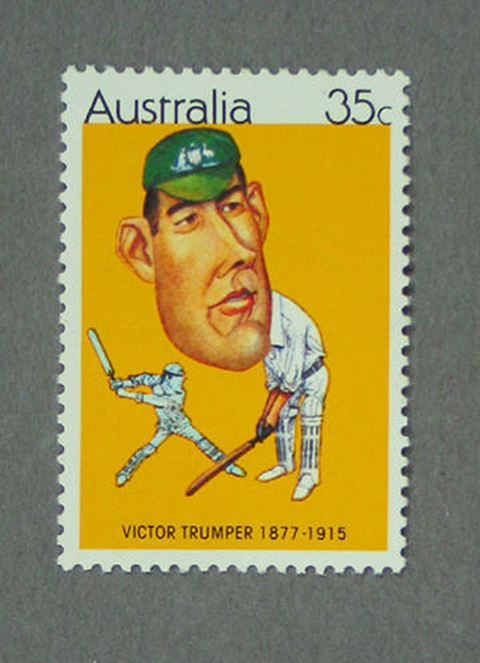
Cricket and cricketers have completely changed in the last 50 years. Their attitude as well as their gear is no comparison to the cricketers of the golden era. The modern-day cricketer is mostly worried about his ranking and remuneration.
The cricketer from the tester years was concerned with honor and the pleasure that he could give to the crowds as well as to his admirers. The chivalry of the amateur spirit is long gone from cricket.
The internet, Courier Service and WhatsApp have replaced and mostly eliminated the traditional postal services to a great extent. Just as the readership of books and magazines have declined. You hardly come across anyone who collects postage stamps these days. There was a time when stamps catalogues of Stanley Gibbon were a rage. Kings and Heads of states were known ardent stamp collectors. Just as appearing on a cover of a magazine was considered a great honor, featuring on a postage stamp was the ultimate achievement around the globe. It was the biggest national honor a nation could bestow upon its heroes.
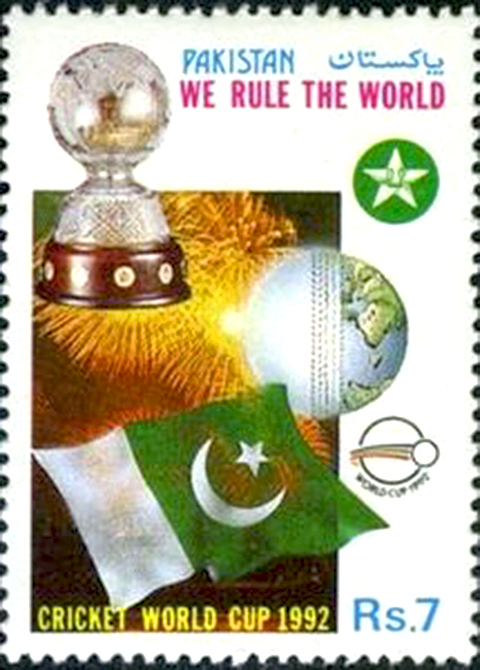
Although collecting autographs from sports like football, squash and hockey were as important in Pakistan but cricket, mostly known as the gentleman’s game at the time, held its own charm and magic always.
A school master Sir Rowland Hill invented the adhesive postage stamp in 1837 which was first issued on May 1, 1840. Within three years Switzerland and Brazil followed suit and shortly after them the United States of America joined in. By 1860, 90 countries of the world had started the use of postage stamps.
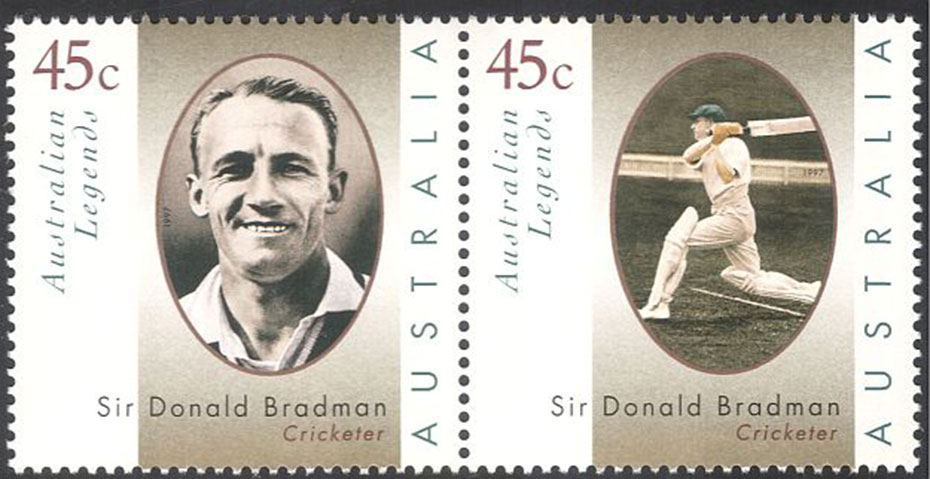
Since then, hundreds of stamps have been produced on different themes and personalities. The game of cricket too has been a keen subject for the postage stamps and it has been celebrated since the first stamp was issued from a post office in early 1960s.
Pakistan was one of the first countries to issue two postage stamps in 1962 which depicted a cricket bat. Several leading cricket personalities of cricket from W.G. Grace and K.S. Ranjitsinhji through Sir Don Bradman to Sir Garry Sobers, Sir Vivian Richards, Dennis Lillee, Imran Khan and Sachin Tendulkar, important World Cup victories by West Indies, Pakistan, Sri Lanka, India and Australia, inaugural and Centenary Test matches, the 150th anniversary of the first Australian Aboriginal tour to England, or just the game and its gear. have all been the well-loved themes of the postage stamps.

The stamps have come out in all shapes, sizes, triangular as well as the ball shaped.
The first cricket stamp was officially issued in 1962 by Cape Verde, a Portuguese Colony until 1975. Cricket had made its roots there around the 19th century. Cape Verde was a key post for the British steamships on the Atlantic routes after a coal supply depot had been built at the port of Mindelo on the island of Sao Vicente in 1838. In the first quarter of the 20th century several local cricket clubs were formed and cut throat matches were staged between them and the English clubs and the visiting ships’ crews.
The first cricketer to appear on a postage stamp was the great all-rounder Sir Garry Sobers in a set celebrating independence of Barbados in 1966. Seven years later in 1973, W. G. Grace (County Cricket 1873-1973) appeared on the first set of cricket stamps issued by the British Postal Services. Grace again appeared in 1988 on the commemorative stamp of the Australia-England Bicentenary Test.

Pakistan postal services issued a set of 3 stamps in 1992 to commemorate the World Cup victory. Cricket has become an international sport and for Pakistan it is a binding and a uniting force.
Even the Talibans were celebrating cricket matches in the hills of northern areas of Pakistan and Afghanistan during the turbulent times. To capture and preserve its cricket history there were other important occasions when such commemorative stamps should have been issued. For example, a postage stamp should have been issued on Pakistan Cricket team’s inaugural tour of India in 1952.

Then the 1954 Oval victory warranted a commemorative stamp, especially of Fazal Mahmood who brought the historic victory to Pakistan. He deserved to be on a postage stamp. Fazal Mahmood was the first Pakistani to take 100 Test wickets. He took 12 or more wickets in a Test against four cricket playing countries.
When Fazal Mahmood passed away in 2005, the PCB Chairman, Shaharyar Mohammed Khan, constituted a Memorial Committee headed by former Test captain Imtiaz Ahmed with Test cricketer Zulfiqar Ahmed and Syed Iftikhar Ali Bokhari as its members. I was co-opted in the committee and was asked to write a paper to make suggestions to honor the Oval hero. One of my suggestions was to bring out a commemorative stamp on the great Fazal Mahmood.

Although my suggestion was much appreciated but till now it has not been implemented. On the other hand, India honored C.K. Nayudu, Vinoo Mankad, Vijay Merchant and Prof. D. B. Deodhar by bringing out a beautiful set of four stamps in 1996.
Hanif Mohammed deserved to be on a stamp after his glorious innings of 337 runs against the West Indies in 1957-58 and 499 runs against Bahawalpur in 1958-59. Sadly, to this day the great batsman has been ignored.
Imtiaz Ahmed, one of the great pillars of Pakistan cricket, became the first wicket-keeper batsman in the world to score a double century in 1955. For that and for his several valiant innings for Pakistan he deserved to feature on a stamp.
Zaheer Abbas also deserved to feature on a Pakistan postage stamp for double hundred and hundred in a match most times 1976-81 and two hundreds in a match most times 1976-82.
Majid Khan, whose batting bore the stamp of a golden age elegance deserved to appear on a postage stamp of Pakistan for his hundred before lunch in 1969 and for hitting 13 sixes for Pakistan against Glamorgan in 1967 at Swansea.
Many other deserving cricketers around the world who did not appear on a postage stamp were: Sir Len Hutton for scoring 364 runs, a record of highest runs in Test cricket that stayed for twenty years. Jim Laker for taking 19 for 90, a world record that remains hard to break. D. V. P. Wright for having 7 hat tricks, the most in a cricket career.
The West Indies have been generous by honoring cricketers like George Headley, Sir Conrad Hunte and several others to appear on their postage stamps. Since cricket is such a fast-spreading sport, its heroes must be given a place of well-deserved honor by making them appear on the postage stamps which will preserve their memory and history till eternity.
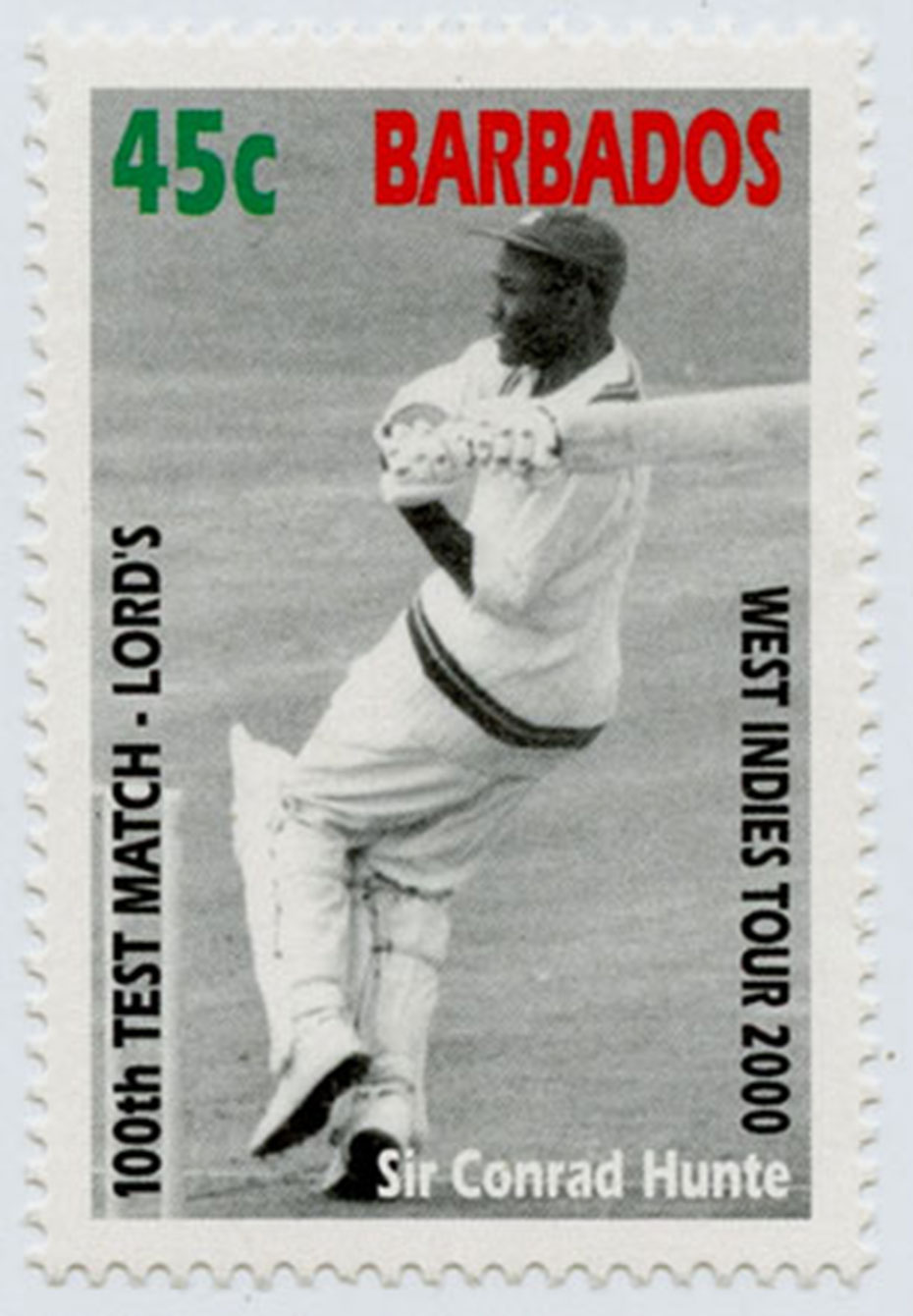
The 2017 ICC Champions Trophy was the 8th in the series. It was a cricket tournament for the eight-top ranked ODI teams in the world. The tournament held in England and Wales was won for the first time by Pakistan when they beat their traditional rival India by 180 runs. The margin of victory was the largest by any team in an ICC tournament.
To commemorate this great victory Pakistan postal services brought out a set of three stamps.
Pakistan Cricket Board should follow suit of the West Indies and bring out a series of postage stamps from 1952 to present.